A Te A cher’s Guide To u sin G c h ATGPT
Languages: Does It Have a n Image Prob L em?

HWRK educational mag azine the online magazine for teachers MARCH 2023 / ISSUE 25 / FREE HWRKMAGAZINE.CO.UK written by teachers for teachers
Internat I ona L Women’s Day - u nsung Hero I nes of eDt ec H b e H av I our Lea D ers HIP D I vers I fy I ng Pr I mary m us I c
W H at’s Wrong W I t H Home W ork?
a L so I ns ID e
Established in May 2006, we are one of the UK’s most dedicated and ambitious anti-bullying charities. Our award winning work is delivered across the UK and each year, through our work we provide education, training and support to thousands of people.


Through our innovative, interactive workshops and training programmes, we use our experience, energy and passion to focus on awareness, prevention, building empathy and positive peer relationships all of which are crucial in creating a nurturing environment in which young people and adults can thrive. Our Mission is to support individuals, schools, youth and community settings and the workplace through positive and innovative anti-bullying and well-being programmes and to empower individuals to achieve their full potential.

DIFFERENCE MAKING A INSPIRING CHANGE EMPOWERING YOUNG PEOPLE To find out more visit www.bulliesout.com | Email: mail@bulliesout.com
BELIEVE IN A WORLD THAT IS FREE FROM ALL
OF BULLYING BEHAVIOUR.
you would like to support us and help us to continue our lifechanging work, you can:
Volunteer with us
Fundraise for us
Make a donation
Join our Speak Out Campaign
Become a Corporate Partner
WE
TYPES
If
\
\
\
\
\
langUages: Does It Have an Image Problem?











IWD - THE UNSUNG
A TEACHER’S GUIDE TO USInG CHATGPT





WHy
WHY

CONTENTS









EDITORIAL: TIME FOR ACTIOn?
It’s hard to see the light shining in the darkness.
FEATURES PEDAGOGY CURRICULUM

6. InTERnATIOnAL WOMEn’S DAYUnSUnG HEROInES OF EDTECH
Meet the stellar cast of female leaders in the EdTech world

15. LAnGUAGES: DOES IT HAvE An IMAGE PRObLEM?

How damaging are perceptions of Languages, both for teachers and students?
18. A UCAS GUIDE FOR TEACHERS






How can teachers best support students applying to university?
23. WHY SHOULD WE InvEST In EMOTIOnAL bAnk ACCOUnTS?
What is an emotional bank account and why should leaders invest in one?


30. WHAT’S WROnG WITH HOMEWORk?







Where are we going wrong with setting homework and why are we doing it?
35. MAkInG THE MOST OF MOCkS Mock exams may be a waste of time unless you employ these strategies
38. A TEACHER’S GUIDE TO USInG CHATGPT




How teachers can leverage artificial intelligence to reduce their workload



LEADERSHIP
62. bEHAvIOUR LEADERSHIP Vital strategies for leaders of behaviour in schools
48. DIvERSIFYInG PRIMARY MUSIC













How to create a more meaningful curriculum by ensuring diversity

52. HOW I USE vISUALISERS TO EnHAnCE TEACHInG In ART AnD DESIGn
Modelling the creation of artwork under the visualiser is a game-changer
56. THE IMPORTAnCE OF COnCEPTS In MATHS




How a conceptual approach to maths develops creativity and freedom for students



64. COMPUTInG POSTER





Fostering Code Literacy - Empowering students with code comprehension



MARCH 2023 // HWRK MAGAZINE // 03 HWRK MAG AZINE C o.u K // INSIDE THIS ISSUE
P 38 P23 P06 P56 P15 @hwrk_magazine
P35
Abigail Blythe Course Leader for level Computer Science As the Course Leader for level Computer Science, my main responsibility is to and organised. This involves planning the curriculum, communicating with exam board professionals, and collaborating with external tech organisations to incorporate real-world industry experience into the course. Additionally, am also Lead Professional Development Leader for STEM Learning, where deliver training to Computer Science teachers and provide coaching and mentoring support. My passion for technology began at young age, and built my first website when was just nine years old. Throughout my teens, continued to develop my interest in technology, exploring di erent aspects like robotics and embedded systems. Although computing technology has always been an essential part of my life, pursued an undergraduate degree in Politics and Sociology at The University of Warwick and Masters degree at Exeter University, where studied the incorporation of non-human elements into the human body and its impact on identity. To the next generation of young women interested in the tech industry, would say that you are welcome in the STEM community, and your contributions are to use your mentors as resources to help you achieve your goals. Also, check out the Modern Muse website, which provides access to successful female role models Celebrating women in the tech industry stereotypes and making young women feel welcome in STEM. Engaging with strong female role models allows young girls to feel empowered to strive towards their Annalese Walmsley As Commercial Director in the property technology space, help tenants find easier and more ordable renting options. work with letting agents across the UK to enable them to o er deposit-free renting to as many tenants and landlords as possible. manage a team of Business Development Managers and Account Managers to create positive rental experience for all. My journey into tech began when started my career as nursery nurse and pursued teaching for three years before relocating to York to work in an insurance company. later joined property company and eventually moved into prop-tech as an Operations Manager, then as Business Development Manager, and finally as Regional Sales Manager for start-up business. Currently, work as Commercial Director at Flatfair, leading team that looks at new ways to innovate and ensuring we have the best product. My advice for young women looking to get into the tech industry is to believe in themselves and their abilities. Although it may appear male-dominated, there are many senior women in property and tech, and women bring unique skill sets to the industry. prefer to describe myself as an Akua Opong Senior Analyst, Service Management As a Senior Analyst, work in the Desktop Services Team at the London Stock Exchange Group. My job is to make sure that all the IT hardware, software and services are working properly, and to help people when they have problems. work hard to fi issues quickly and make sure everyone is happy with the service they are receiving. started my journey in tech by studying Business Studies with Sociology and Religious Studies/Philosophy at university. After that, completed BSc in Computing and IT and worked part-time in retail while studying. have over years of experience in IT, working in di erent industries from hospitality to consulting to financial services. My advice for young women who want to work in tech is to network, keep learning Dream big and challenge yourself to be the best version of yourself. It’s important to celebrate women in the tech industry because we can empower and inspire each @hwrk_magazine 06 // HWRK MAGAZINE // MARCH 2023 As we approach International Women’s Day 2023, it’s crucial to highlight the achievements of women in tech and inspire the next generation of women leaders in this field. In this blog, Joe Arday and have collaborated to showcase the journeys of exceptional women in the tech industry, providing insights and lessons that can inspire students and professionals alike. While there are already numerous lists out there highlighting the achievements of successful women in tech, these often focus solely on CEOs of international corporations with hefty turnovers. Our aim is to provide something di erent and showcase women at all stages of their careers, sharing the invaluable lessons they’ve learned along the way. This is not an exhaustive list, but rather compilation of inspiring stories that demonstrate the remarkable impact women are having in the tech industry. Additionally, we’ve created a slide deck that you can easily incorporate into your lessons throughout the year. So, let’s delve into this inspiring compilation and celebrate the incredible women who have helped to shape the tech landscape. Technology has become an integral part of our daily lives, and it’s di cult to imagine a world without it. From smartphones to artificial intelligence, technology has revolutionised the way we live, work, and communicate. Despite the tremendous strides made in this field, women remain underrepresented in the tech industry, and the gender gap persists.
HEROINES OF THE EDTECH WORLD FEATURE across various STEM-related jobs. is crucial in breaking down gender goals. individual in tech, not just a woman in tech, and make significant contributions on daily basis. It is important to celebrate women in the tech industry because research shows that gender bias is still shaping the career choices of young people today. Women were once more often found in administrative or support roles in tech, but this is no longer the case. Recognising and celebrating women’s achievements in tech can inspire the next generation of women other to achieve great things. Outside of work, am passionate about promoting diversity, mental health awareness, and volunteering for various charities. I’m proud to be part of the UK Wellbeing Committee, WIN Community, WIN Tech Network, and STEM Ambassador. I’m also Team London Ambassador and use technology to drive sustainable development goals and social impact. MARCH 2023 // HWRK MAGAZINE // 07 InternatIonal Women’s DayUnsUng HeroInes of eDtecH FEATURE
LANGUAGES HAVE AN IMAGE PROBLEM? The picture for Modern Foreign Languages in English secondary schools is not pretty. The number of students opting to take a GCSE in a language is in decline despite the government’s ambition for 90% of pupils studying a full suite of Ebacc subjects by 2024. The trend continues at A-Level, with French seeing a 5.8% decrease in entries in 2022, one of the biggest drops of any subject last summer. This of course feeds through to university and, in turn, to teacher education; the recruitment shortage is frankly frightening, with just 34% of the required number of MFL trainees registered for 2022-23. This makes MFL one of the most under-recruited subjects in the curriculum.
DOES
PEDAGOGY The rise of AI in the classroom has brought about a new player in the edtech world: ChatGPT. As you may have seen in the news or on social media, ChatGPT is creating quite a buzz. But what exactly is it, and should we be embracing it or shunning it as a tool in the classroom?
TEACHER’S
of data, allowing it to answer questions and provide information on wide range of topics. In essence, is sophisticated version of Google, constantly learning and adapting based on the information fed into it. With Microsoft’s recent surrounding the use of ChatGPT in education. On one hand, has the potential to significantly ease the workload of teachers. On the other, there are concerns about As with any new technology, there are certainly some fears using ChatGPT in the classroom. Let’s explore some of these fears PUPILS USING THEIR WORK FOR The most obvious concern of powerful technology like this is that pupils will use its powers for class work to assess their progress accurately? If they use to complete coursework or controlled assessment, how can we check for it before it goes to the exam board? Well firstly, pupils have to have be using it in class. If they do have devices, then monitoring your pupil’s screens and being clear about times you can and can’t use is important. access to certain tools are blocked so being clear about this with your classes will prevent these issues. game, as you will not know if they the home learning you are setting and how it can be used. Be vigilant coming back from pupils and notice there’s sudden change in their writing style. Think about setting plotting and analysing data using graph or chart to make inferences for geography lesson. PEDAGOGY EMBEDDING MISCONCEPTIONS OR INACCURACIES Like any new software, Chat GPT isn’t 100% accurate. When you load the website it has a disclaimer about its limitations May occasionally generate incorrect information”, “limited knowledge of world events after 2021” therefore you have to be cautious to check any work you use to produce and use it as lesson to teach pupils that not everything they read online is true..! GDPR Before you go and get this new tool to generate reports for your whole class be aware that there are concerns about GDPR and the privacy of pupil data. To address regulations. So, don’t just drop your whole class list into the chat bar, get to generate reports and then add the pupil’s names in afterward! TRAINING AND There is also fear that some sta may resist using ChatGPT in potentially undoing the great work being done, especially for SEND pupils. To address this, it important to provide adequate training and support to help sta using ChatGPT. This may include providing training sessions, workshops, or online resources, With the fears and warnings out of the way let’s get to the good bit, how can we use this tool for the power of good in our classrooms and reduce our workload?
A
GUIDE TO USING CHATGPT
HWRKMAGAZINE.CO.UK // // CURRICULM In addition to helping to develop this more flexible use of processes and procedures, another big advantage to approaching the teaching of mathematics in this way is that it allows us to support between different procedures that arise from the same concepts. For example, the addition of fractions uses exactly the same concepts and models of addition and exchange (along with the concept and suitable models for fractions). same concepts again, as does the addition of terms expressed algebraically (in fact it is because these concepts are what allows the addition of algebraic terms to work in the way it does that they types of numbers). When pupils learn about concepts like addition and exchange, revisiting them and combining them with an everdeveloping concept of number, they can see more clearly the links between these seemingly different processes. In the last few years cognitive science has contributed much to our knowledge of how to make learning “sticky” with pupils, and an important idea from cognitive science is the idea of a schema. A schema is the way we organise our knowledge of different concepts; how it is connected in our heads. In order to gain new knowledge, we must assimilate it into our existing schema. Where things like column addition, of surds, addition of vectors and addition of algebraic terms are taught as separate and distinct processes to be memorised, these connections are not made and so bits of knowledge (which of course many pupils never do). addition, place value, fractions, surds, vectors and terms and shown how these concepts combine in very similar ways to allow us to all of these different entities, the connections are much stronger and the knowledge much more easily Another advantage to approaching maths teaching by teaching about the journey through mathematics becomes infinitely more coherent. Instead of pupils feeling like they have to learn million and one tHe ImPortance of concePts In matHs While mock exam season is both a work-heavy and stressful time of year for students and teachers alike, it is a fundamental opportunity for students to practise sitting exams, and for teachers and leaders to assess where their students are, diagnose gaps and misconceptions and use these to best prepare students for the real thing. MAKING THE MOST OF MOCKS PEDAGOGY However, with so much pressure to turn around lengthy exam papers and with some departments marking two or even three subjects’ worth, can be di cult to ensure that marking is consistent and accurate. Not doing so can paint skewed picture what’s to come on results day for you and your students and it also removes useful opportunities to troubleshoot and intervene where necessary. Here are some strategies to help streamline your mock standardisation process: makIng tHe most of mocks FEATURE For those new to leadership, or even those more experienced, navigating the occasionally choppy waters of people management can be quite the challenge. This can also be extended to the process of building positive relationships within teams, not only when forging them but potentially even more challenging, maintaining them.
SHOULD WE INVEST IN EMOTIONAL BANK ACCOUNTS?
sHoUlD We Invest In emotIonal bank accoUnts?
CONTRIBUTORS
WRITTEN BY TEACHERS FOR TEACHERS
Amy Forrester
@amymayforrester
Amy is Director of Pastoral Care (KS4), Head of Year 10 and an English teacher at Cockermouth School.

Rachel
@TheSpanishist
Rachel is Assistant Headteacher for Teaching & Learning and Spanish Lead at a secondary school in Somerset.




Peter Mattock
@JonFrancisAye
Jon Aye is Head of Teaching and Learning
Art at a secondary school in North London.
Rachel
@MissMika_Eng
Bhamika Bhudia is a Head of English in a mixed comprehensive secondary school in London. She has previously held the position of Lead Teacher with a focus on Teaching & Learning and Diversity, and strives to continue to adapt teaching to research in education and the ever-evolving world around us.

Sarah Wordlaw
@smwordlaw
Primary Deputy Head and leader of teaching and learning with a particular penchant for Computing, project-based learning, Music and Performing Arts. Passion for cooperative learning. Firm believer in a coaching leadership. Lover of polka dots, cheese and Friday night dancing.
Henry
@MrMattock
Peter Mattock has been teaching maths for over 15 years. He is a specialist leader of education (SLE) and an accredited secondary maths professional development lead, who regularly presents at conferences across the country. His new book, Conceptual Maths (Crown House), is out now.
Joe Arday
@TheAverageArday
oe aka “The Average Arday” is an educator of Computer Science, IT, STEM with certified Edtech trainer status in both Google and Microsoft with over 10 years’ experience in London secondary schools. Joe has been an educator since 2010 and is the current Head of Computer Science in an 11 to 19 East London school.

@HenrySauntson
Henry Sauntson is a Senior Leader and SCITT Director, based in Peterborough. His enthusiasm and interest lies primarily with teacher education and development, especially in the early career stages. He has contributed material to a number of journals and spoken at a range of events that celebrate the use of evidence in education; we need to be informed, not led.
@MsArthurCompSci
Rachel is Head of Computing at Teach First. She is responsible for writing the Teacher Training Programme for all the computing trainees. Prior to working at Teach First, Rachel was an Assistant headteacher and also has gained industry experience working in Cyber security for PwC. Rachel is passionate about diversifying the computing curriculum.
@DoctorPreece
Dr David Preece is a former Head of UCAS and Head of Geography in SE London schools, before he joined Teach First in 2021. He tweets @DoctorPreece, where you can find more advice on preparing Geography candidates specifically.




@karalkiernan
Freelance Educator. Former Head of Junior School & Nursery. School Governor. MEd in Educational Leadership. Founder of http:// thebooktrain.co.uk
Faheema Vachhiat

@FVachhiat
Faheemah is an experienced educator with over a decade of teaching experience. With a passion for providing the best possible learning experiences for students, Faheemah is always seeking ways to improve and innovate her teaching practice. Through her substack, she shares her reflections on teaching and learning, explores the latest trends and best practices and shares strategies for other educators looking to enhance their approaches to curriculum design, classroom management, and pedagogy.
hwrkMAG A zine.co.uk // M ee T T he T e AM
Jon Aye
Kara Kiernan
Bhamika Bhudia
Arthur
David Preece
Wellfair
Sauntson
Legal Disclaimer: While precautions have been made to ensure the accuracy of contents in this publication and digital brands neither the editors, publishers not its agents can accept responsibility for damages or injury which may arise therefrom. No part of any of the publication whether in print or digital may be reproduced, stored in a retrieval system or transmitted in any form or by any means without prior permission of the copyright owner. EDITOR
PUBLISHING DIRECTOR Alec
Power DESIGNER Adam Blakemore MANAGING DIRECTORS G Gumbhir,
Power HWRK MAGAZINE PUBLISHED BY EDU ONLINE GROUP LTD 1st Floor, GD Offices, 47 Bridgewater Street, Liverpool, L1 0AR E: enquiries@edu-online.co.uk T: 0151 294 6215
Andy McHugh
Frederick
Alec Frederick
TIME FOR ACTION?

It’s hard to see the light shining in the darkness.
As I write this, my Twitter timeline is packed with teachers, school leaders and parents, debating the government’s recent pay o er. Today’s debate essentially comes down to the following arguments:
1. Schools need their funding to be significantly increased, just to cover running costs. But teaching sta also need significantly increased salaries, as the profession is now deemed to be too poorly paid in comparison to other careers. The truth is, there aren’t enough teachers (even when you add in trainees) to fill the necessary vacancies and it’s getting worse, year on year. Soon you won’t be able to guarantee that your children will be taught by qualified teachers. It’s robbing children of their future, just to line the pockets of the already-rich, who are benefitting from taxpayers’ money being directed away from schools.

2. Teachers should just be grateful for any increase. They basically had 18 months o during the pandemic. The rest of us are skint, so they should be too. 13 weeks’ holiday and a gold-plated pension? They’re having a laugh. What else would you cut to fund schools? Hospitals? Oh, and teachers shouldn’t be allowed to strike either. Who would look after and feed our children during the day?
As ever, the loudest voices online seem to belong to those who are
to the left of the Dunning-Kruger graph. The trouble is though, that these are the same people who run the Department for Education, the Treasury and who occupy 10 Downing Street.
Strikes have undoubtedly had some impact on accelerating pay talks. At some point though, a stand has to be taken on a grander scale. While the leadership of the NEU, NASUWT, NAHT and other education unions try to work out how to respond in a variety of measured tones, their members put o paying their gas bills. They look for jobs outside of teaching.
Passionate, committed teachers, who love their jobs, desperately try to figure out how to not let their school communities down, while at the same time worrying about feeding their own children at home. It’s not fair to put the best of us in that position.
“But teaching isn’t a job, it’s a vocation!” cry those who don’t teach. They’re right, it is a vocation. But rising rent payments and supermarket prices don’t care about your vocation. They want cold, hard cash.
When it comes down to it, money talks. If you want enough teachers, you need to pay for them. If you want your teachers to be graduates, you have to pay competitive graduate-level salaries. If you want experienced sta to keep their expertise within the education system, then you need to pay the going rate. Otherwise, they will continue to leave for jobs with greater flexibility, lower workload and less stress.
When those factors are ignored, or as it seems, roundly dismissed as socialist nonsense, you make a dangerous trade-o : children are left without a good enough education system. They will end up lacking the knowledge they are entitled to, be unskilled for the industries awaiting them and will have missed out on opportunities a orded to previous generations, whose education was fully funded. In other words, they will have been deliberately deprived and that’s completely unacceptable.
So what’s next? More strikes? Can all unions agree on a coordinated industrial plan? Will the sta from the Department for Education and Ofsted join in? It’s looking more and more likely by the day.
Anything less than a fully-funded budget increase for schools, including backdated pay rises for teaching sta would not just be an insult, it would cause irreparable damage to an entire generation of children.
I don’t like strikes. They’re divisive, cause pain for all concerned and are the nuclear option, when all other e orts have been tried and failed. But it’s now time for everyone within education to take that stand to make the government listen so that they finally invest properly in our children’s future. We have a moral duty to do so.


 Andy McHugh Editor | HWRK Magazine
Andy McHugh Editor | HWRK Magazine

EDITORIAL:
MARCH 2023 // HWRK MAGAZINE // 05 HWRKMAGAZINE.CO.UK
IWD - THE UNSUNG HEROINES OF THE EDTECH WORLD



















 By Rachel Arthur and Joe Arday
By Rachel Arthur and Joe Arday






As we approach International Women’s Day 2023, it’s crucial to highlight the achievements of women in tech and inspire the next generation of women leaders in this field. In this blog, Joe Arday and I have collaborated to showcase the journeys of exceptional women in the tech industry, providing insights and lessons that can inspire students and professionals alike.

While there are already numerous lists out there highlighting the achievements of successful women in tech, these often focus solely on CEOs of international corporations with hefty turnovers. Our aim is to provide something di erent and showcase women at all stages of their careers, sharing the invaluable lessons they’ve learned along the way. This is not an exhaustive list, but rather a compilation of inspiring stories that demonstrate the remarkable impact women are having in the tech industry. Additionally, we’ve created a slide deck that you can easily incorporate into your lessons throughout the year.

So, let’s delve into this inspiring compilation and celebrate the incredible women who have helped to shape the tech landscape.

@hwrk_magazine 06 // HWRK MAGAZINE // MARCH 2023
Technology has become an integral part of our daily lives, and it’s di cult to imagine a world without it. From smartphones to artificial intelligence, technology has revolutionised the way we live, work, and communicate. Despite the tremendous strides made in this field, women remain underrepresented in the tech industry, and the gender gap persists.
Abigail Blythe
Course Leader for A level Computer Science



@404AbbiNotFound
Annalese
Walmsley
Commercial Director
Akua Opong Senior Analyst, Service Management



As the Course Leader for A level Computer Science, my main responsibility is to ensure that the course is well-structured and organised. This involves planning the curriculum, communicating with exam board professionals, and collaborating with external tech organisations to incorporate real-world industry experience into the course. Additionally, I am also a Lead Professional Development Leader for STEM Learning, where I deliver training to Computer Science teachers and provide coaching and mentoring support.
My passion for technology began at a young age, and I built my first website when I was just nine years old. Throughout my teens, I continued to develop my interest in technology, exploring di erent aspects like robotics and embedded systems. Although computing technology has always been an essential part of my life, I pursued an undergraduate degree in Politics and Sociology at The University of Warwick and a Masters degree at Exeter University, where I studied the incorporation of non-human elements into the human body and its impact on identity.
To the next generation of young women interested in the tech industry, I would say that you are welcome in the STEM community, and your contributions are much needed and valued. Don’t hesitate to use your mentors as resources to help you achieve your goals. Also, check out the Modern Muse website, which provides access to successful female role models
As a Commercial Director in the property technology space, I help tenants find easier and more a ordable renting options. I work with letting agents across the UK to enable them to o er deposit-free renting to as many tenants and landlords as possible. I manage a team of Business Development Managers and Account Managers to create a positive rental experience for all.

My journey into tech began when I started my career as a nursery nurse and pursued teaching for three years before relocating to York to work in an insurance company. I later joined a property company and eventually moved into prop-tech as an Operations Manager, then as Business Development Manager, and finally as Regional Sales Manager for a start-up business. Currently, I work as a Commercial Director at Flatfair, leading a team that looks at new ways to innovate and ensuring we have the best product.
My advice for young women looking to get into the tech industry is to believe in themselves and their abilities. Although it may appear male-dominated, there are many senior women in property and tech, and women bring unique skill sets to the industry. I prefer to describe myself as an
individual in tech, not just a woman in tech, and I make significant contributions on a daily basis.
As a Senior Analyst, I work in the Desktop Services Team at the London Stock Exchange Group. My job is to make sure that all the IT hardware, software and services are working properly, and to help people when they have problems. I work hard to fix issues quickly and make sure everyone is happy with the service they are receiving.
I started my journey in tech by studying Business Studies with Sociology and Religious Studies/Philosophy at university. After that, I completed a BSc in Computing and IT and worked part-time in retail while studying. I have over 8 years of experience in IT, working in di erent industries from hospitality to consulting to financial services.
My advice for young women who want to work in tech is to network, keep learning and don’t be afraid of the unknown. Dream big and challenge yourself to be the best version of yourself. It’s important to celebrate women in the tech industry because we can empower and inspire each
other to achieve great things.
across various STEM-related jobs. is crucial in breaking down gender goals.
Celebrating women in the tech industry stereotypes and making young women feel welcome in STEM. Engaging with strong female role models allows young girls to feel empowered to strive towards their

It is important to celebrate women in the tech industry because research shows that gender bias is still shaping the career choices of young people today. Women were once more often found in administrative or support roles in tech, but this is no longer the case. Recognising and celebrating women’s achievements in tech can inspire the next generation of women leaders in this field.
Outside of work, I am passionate about promoting diversity, mental health awareness, and volunteering for various charities. I’m proud to be part of the UK Wellbeing Committee, WIN Community, WIN Tech Network, and STEM Ambassador. I’m also a Team London Ambassador and use technology to drive sustainable development goals and social impact.
FEATURE
MARCH 2023 // HWRK MAGAZINE // 07
Avye Couloute
Maker, Coder, Workshop Leader, Social Entrepreneur, Female Tech Advocate @girlsintocoding

I am a female tech advocate, social entrepreneur, maker, coder, and workshop leader. I founded Girls Into Coding to empower girls to embark on their own tech journeys and benefit from similar experiences. My role is to encourage more girls to get involved in STEM by providing free hands-on physical computing, robotics, and coding workshops. I believe that all girls should have access to opportunities to learn how to code and develop their making and digital skills, regardless of where they come from.

My journey into tech began when I started attending coding and physical computing
Beverly Clarke
Head of Education and Learning at Tech She Can @BeckyPatel86
Education Consultant, Coach and Author @msBclarke

workshops at just seven years old, and I started co-running coding workshops to share my skills.
My advice to the next generation of young women looking to get into the tech industry is to not be afraid of being afraid and to take your seat at the table, as you deserve it. I believe it is important to celebrate women in the tech industry because it helps to break down the barriers that prevent girls and women from pursuing careers in this field.
Remember, sometimes you have to be the one to take the lead.
Caroline Keep
As the Head of Education and Learning at Tech She Can, my role is to lead a team that creates and delivers exciting lessons to inspire both boys and girls to consider careers in technology.

My journey into tech began when I was a teacher who was passionate about making sure that gender did not limit what my students thought they could achieve.
To the next generation of young women looking to get into the tech industry, I would say: be yourself! There are tech roles that suit people with many di erent hobbies and passions.
Celebrating women in the tech industry is crucial because you can’t be what you can’t see. By recognising the achievements of women in tech, we encourage and inspire others to follow in their footsteps.
As an education consultant, I help schools and other organisations improve the way they teach and support students. As a coach and mentor, I work one-on-one with people to help them achieve their goals and develop their skills. And as an author, I write books and articles about education and technology.
My interest in tech started in school when I studied computing. I went on to work in corporate IT before transitioning to teaching in schools and colleges. Through my work in education, I became involved in promoting STEM education and developing computing education regionally and nationally.

To young women interested in tech, I would recommend finding a coach or mentor to guide you through your career, and building a professional network to stay informed about developments in the industry.
It’s important to celebrate women in tech because they are currently underrepresented in the field. By highlighting the achievements of women in tech, we can encourage more women to consider careers in this exciting and growing industry.
I wish you all the best in your future tech career!
PhD
researcher Data Science / Teacher @KA81


As a PhD researcher in data science and a teacher, my role involves teaching young people how to use technology to create things they want, while also researching ways to improve education using tech. I work in a “geek lab” at Uclan, just like in the movie “Big Hero Six.”
My journey into tech began when I was very young and started taking things apart to see how they worked. I’ve always enjoyed building things and being a “Maker,” and I encourage others to join their local maker communities and attend events to learn from others.
It’s important to celebrate women in the tech industry because we bring di erent perspectives and ideas, which are crucial to creating technology that works for everyone. Girls often think tech is all about robots and coding, but it’s so much more, including art, healthcare, education, and wellbeing.
My advice to young women is to dream big, be yourself, and don’t be afraid to bring your unique view to tech. As Winston Churchill said, “Success is not final, failure is not fatal: It is the courage to continue that counts.”
Becky Patel
@hwrk_magazine 08 // HWRK MAGAZINE // MARCH 2023
Dawn Hallybone


 Chief Strategy O cer @dawnhallybone
Chief Strategy O cer @dawnhallybone


Jodie Lopez
“The Edtech Ninja” (Edtech Business Consultant)

@JodieWorld
Julia Adamson
Managing Director, Education and Public Benefit At BCS
@AdamsonJulia
I work for a company that makes computer programs for schools, and my job is to help make and advertise those programs.



I used to be a teacher for a long time, and I always liked using technology in the classroom. One day, I went to a meeting where people were talking about how they used Nintendo game systems in schools in Scotland, and that made me interested in finding even more creative ways to use technology in education. When I became a school administrator, I also got to work with some di erent tech companies and startups.
If you’re a young woman who wants to work in tech, my advice is to do your research, connect with people in the industry, go to events, and keep learning new things.
It’s really important to celebrate women who work in tech because they bring di erent experiences and perspectives to the field, and we need all kinds of voices and ideas to make technology work better for everyone.
I am “The Edtech Ninja”, an Edtech Business Consultant. This means that I work with education technology companies to help them create products that are suitable for schools. I use my expertise to ensure that the technology being developed meets the needs of teachers and students. In addition, I also create content such as videos and blogs to support teachers in using technology across di erent subjects in the curriculum.
My journey into tech began because of my visual impairment. Being blind in one eye made typing easier for me than handwriting, so I started using technology to help me with my work. As a teacher, I saw how technology could help students with di erent learning needs access the curriculum. This inspired me to explore more opportunities in the field of edtech and led me to where I am today.
To young women who want to get into the tech industry, I would advise them to keep an open mind and stay curious. Don’t be afraid to ask questions and seek out new experiences. The tech industry is always evolving, so it’s important to keep learning and adapting to new developments. By celebrating women in tech, we can help promote diversity and ensure that everyone’s voices are heard.
In my own career, I have faced challenges and obstacles, but I have persevered by taking small steps and remaining focused on my goals. I believe that anyone can achieve their dreams, no matter their background or circumstances. So, my final advice to anyone pursuing their dreams is to keep moving forward, even if the steps may seem small at first. With persistence and hard work, anything is possible.
I am the Managing Director, Education and Public Benefit at The British Computing Society (BCS). My role is focused on improving computing education to create better opportunities for young people, society and the economy. I began my career as a primary school teacher, specialising in science and technology, and I became fascinated by the opportunities that tech created for my students.
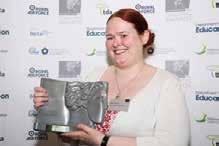
For young women looking to get into the tech industry, I would advise you to consider if you enjoy finding solutions to challenges and making the world a better, fairer, more sustainable and safer place. Tech is not just about computers and phones, it is a wonderfully varied industry that is involved in medicine, energy, space research, entertainment, transport, farming, fashion and foodit’s key to everything in the future.



It’s important to celebrate women in the tech industry because it inspires more girls to see their future in tech careers. Tech can do great things, but we need diverse views to ensure that solutions are ethical, accountable and competent. Without diversity, tech and data can easily reflect or magnify biases and discriminate against individuals, groups and demographics.

HWRKMAGAZINE.CO.UK MARCH 2023 // HWRK MAGAZINE // 09 FEATURE
Nicola Looker
Lecturer of Education (Computing) @nalooker





I am a Lecturer of Education (Computing) at Edge Hill University in the UK. My main role is to train people who want to become computer science teachers. I am also involved in research, with a particular interest in programming problem-solving and teacher education.


My journey into tech started when I chose to study computing at school. I’ve always loved the challenge of complex problems and the buzz of figuring out solutions, and that’s what programming is all about. From school, I went on to study computing at college and then got a job as a junior programmer at a consultancy. I stayed in industry for about 15 years, working
on a series of fascinating projects and learning new programming languages and technologies. At some point, I realised that I wanted to give something back and pass on what I’d learned to the next generation. That’s why I did an Open University degree in Computing (while still working) and then a PGCE course to retrain as a computer science teacher.
To the next generation of young women looking to get into the tech industry, I would say: Just do it! There are so many di erent roles in the tech industry, and more support than ever before. Do some online research into jobs and courses and then try to talk to people in the industry to find out what experience or qualifications you need. Make a plan and figure out how you can move step by step towards your goals. There are so many organisations and people out there that want to help, so be brave, reach out, and seize opportunities.
It’s essential to celebrate women in the tech industry. I think it’s great for young women to hear the stories of people like them - everyday women with similar interests. There are so many women working with technology doing valuable, rewarding, and challenging work. They are making an impact in a wide range of sectors and specialities – science, finance, medical, education, charity, and researchand it is great to hear from them!
Finally, my advice to those who want to get into tech is to do the research, reach out to organisations and individuals, and find out as much as you can. Don’t spend too long agonising about making the ‘perfect’ decision and don’t be put o by all the buzzwords! Just get a foot in the door, begin getting experience, and you’ll soon find out which bits of the job really feed you. Then you can start to find your passion and go for it!
Paulette Watson Global Tech Disruptor - Founder | Entrepreneur



I am a business professional who started a company called Academy Achievers to improve the educational journey of disadvantaged, disa ected, and vulnerable children and young people. My journey into tech began with my love for computing, math and Business studies in school, which led me to enrol in a Master’s degree in Information Communication Technology and short programming and coding courses. I started teaching Computer Science - GCSE, A Levels and set up Academy Achievers, and now I am leading the Global #BeMedigitalinclusion to raise aspirations for one million global majority women and girls in STEM | Web 3 related careers.
I believe in closing the digital skills gap and would advise young women looking to get into the tech industry to make a list of the companies/organisations they would like to work for, be open-


minded, question everything, and use their network to gain experience. They should also read, join communities such as #BeMedigitalinclusion and have fun learning about the di erent possibilities in tech.
Celebrating women in the tech industry is essential because the sector needs talent, and women must have access to develop relevant digital skills to fill workforce gaps and keep up with changing demands. Learning does not stop once one is in the building and feels they have reached it.
In conclusion, let’s make a social impact by building and raising one million global majority women and girls’ aspirations in STEM | Web 3 related careers. As Michelle Obama said, “Success isn’t about how much money you make; it’s about the di erence you make in people’s lives.”
@hwrk_magazine 10 // HWRK MAGAZINE // MARCH 2023
Rebecca Franks

 Learner experience designer @Franksbeckyhi
Learner experience designer @Franksbeckyhi
 Sukvinder Kathuria
Founder and CEO TechGirls @techgirlsuk
Sukvinder Kathuria
Founder and CEO TechGirls @techgirlsuk

Sophie Powell

Cyber Security Student & President of CyberWomen@Warwick
I create exciting projects for young people who want to use technology to make something unique and meaningful. I’ve always loved making things, from pencil holders to sewing my own bags and quilts. When I discovered technology, I started using it to create music and websites. After teaching computing for over 15 years, I moved to the charity sector where I design digital projects for young people to follow.
I know that the tech industry can sometimes be intimidating for underestimated groups, which is why I’ve spent the last 10 years learning about issues around inclusion. To young women looking to get into tech, my advice is to surround yourself with a network of strong women who will support and motivate you. Women have unique strengths and passions that can change the world, and it’s crucial to celebrate those making a di erence.
I believe in creating a tech industry where everyone can be their authentic self, and I’m dedicated to making that a reality over the next decade – watch this space!
As the founder and CEO of TechGirls, I work with schools to help girls learn about career options, especially in STEM fields. I do this by running workshops that teach girls about gender balance and the skills needed to work in these industries.
I started my journey in tech by studying computer science at university, even though I wasn’t sure it was what I wanted to do. But I ended up really enjoying it and went on to work in the IT department for the NHS.

My advice to young women looking to get into tech is to remember that coding isn’t the only skill needed in the industry. There are many roles within tech that require di erent skills and it’s a fun and exciting place to work.
It’s important to celebrate women in tech because having relatable role models can make a huge di erence. Women who work in tech are just regular people who have chosen to work in a male-dominated industry. We need to acknowledge their successes and give the next generation the confidence to follow in their footsteps.



Finally, while planning is important, it’s also important to be curious and open to change.


My current job title is student in Cyber Security and President of CyberWomen@ Warwick. As a student, I study Cyber Security, which involves looking into aspects such as cybercrime, coding, and human behaviour regarding cyberattacks. Additionally, I am involved in the CyberPath program, which aims to help small and medium-sized businesses become more cyber-knowledgeable and train us to protect their businesses from cyber incidents.
My journey into tech began when a teacher introduced me to the idea of working in Forensic science but with technology. After taking A-Level and choosing a degree in Cyber Security, I have been exposed to many more parts of the industry and am excited to continue to learn more.

To young women looking to get into the tech industry, I would advise you to understand that you are enough and are capable of achieving so many amazing things in the Cyber Security field as long as you have the passion to do so. There is a path for everyone, whether you have technical experience or not.




It is important to celebrate women in the tech industry because inclusivity starts with everyone. Highlighting female role models and championing their work ensures that it gets the recognition it deserves. CyberWomen@Warwick was created to create a positive learning environment for anyone, regardless of their age, identity, or interest.
It’s never too late to change paths. Stay curious and explore all opportunities that come your way.
HWRKMAGAZINE.CO.UK MARCH 2023 // HWRK MAGAZINE // 11 FEATURE

DOES LANGUAGES HAVE AN IMAGE PROBLEM?









 By Rachel Wellfair-Priest
By Rachel Wellfair-Priest

The picture for Modern Foreign Languages in English secondary schools is not pretty. The number of students opting to take a GCSE in a language is in decline despite the government’s ambition for 90% of pupils studying a full suite of Ebacc subjects by 2024. The trend continues at A-Level, with French seeing a 5.8% decrease in entries in 2022, one of the biggest drops of any subject last summer. This of course feeds through to university and, in turn, to teacher education; the recruitment shortage is frankly frightening, with just 34% of the required number of MFL trainees registered for 2022-23. This makes MFL one of the most under-recruited subjects in the curriculum.



FEATURE HWRKMAGAZINE.CO.UK MARCH 2023 // HWRK MAGAZINE // 15
Yet according to a survey by the British Council, 69% of adults in the UK wish they had kept up the language they learned at school. Businesses are crying out for linguists, and the subject has so much to o er; bilingual people earn more on average than those who only speak one language, and languages open the doors to travel, learning about new cultures, and meeting new people.

So, with so many benefits and opportunities, why is language learning in crisis in schools in England?


The problems
One possible reason cited by Ofsted in their subject review of MFL for the lack of motivation to learn languages is the perception that languages are di cult. This perception is identifiable in academic literature, policy reports, as well as in the media, and even by colleagues working in schools. Ofqual’s inter-comparability review in 2019 did find evidence of harsh grading in French and German, and adjustments were made. But the ‘di culty’ perception is about more than examinations; the idea that learning a foreign language is too much e ort and probably not necessary or relevant for English people as ‘everyone speaks English anyway’ appears to permeate our whole culture, perhaps never more so than in post-Brexit England.
Much of this damage is done subconsciously. In a recent Twitter poll, 85.7% of teachers responded that they had heard a colleague speak negatively about languages, either as a di cult or undesirable subject to study. When these opinions are articulated, even from one colleague to another, negative perceptions of language learning are perpetuated.



The proposed solution in the review to these issues is to focus on improving students’ level of proficiency by recommending an approach based on the ‘three pillars’ of vocabulary, grammar, and phonics. Few teachers would dispute the importance of developing mastery of these elements, but the question of how we go about doing this – and to what extent ‘form’ should come first and communication later - has proven divisive.
Right problems, wrong solutions
Ofsted’s MFL review has correctly identified some of the challenges our subject faces. However, I believe that we should proceed with caution when considering how to solve these problems. Some have responded by advocating a ‘form-focused’ approach centring around explicit grammar and not deviating too far from a ‘most frequent words’ list. To what extent will this enable students to perceive languages as less di cult and to enjoy
learning them? Furthermore, the negative rhetoric around MFL itself that is a big part of the problem. By constantly framing the subject as di cult, as irrelevant, as the problem subject on the curriculum, and down-talking MFL, we are creating a selffulfilling prophecy. If pupils see languages as di cult and irrelevant, what can we practically do to enact positive change?
Solutions 1. Spread the joy



Instead of framing languages as di cult, we need to change the rhetoric. This means more conversations and comments from colleagues in all roles about how amazing languages are. What if every time a child heard a member of sta talking about languages it was about how beautiful, fascinating, or useful languages are? About how significantly advantaged people who speak two or more languages are compared to their monolingual peers in many aspects of life?
It also means considering how we can teach a rich and demanding curriculum in a way that actually motivates pupils to do that hard work. As Daniel Willingham has pointed out, thinking requires e ort and hard work, but curiosity and interest can provide a way in. As Mary Myatt puts

@hwrk_magazine 16 // HWRK MAGAZINE // MARCH 2023
it, ‘when we are curious, we have an intrinsic motivation to want to find out more’.

In the context of languages, what does this kind of curiosity and intrinsic motivation look like? It of course follows that a sense of self-e cacy is built through mastery. But to get to that stage, where is the ‘in’? For MFL, it is likely to involve opportunities for spontaneity and creativity, and creating a space where ‘giving it a go’ is acceptable. It means a ording students the space to learn about topics or vocabulary that are relevant to them, even if those things may not technically be on the most frequent words list. As departments carefully consider the implications for our curricula of Ofsted’s ‘recommendations’ and the resultant new exam specifications, we should be mindful not to focus too narrowly on the ‘features’ of a language in isolation. We should also consider what knowledge and experiences are demanding, enriching, interesting and valuable in and of themselves to learners and users of languages.
The media has a role to play here, too; instead of constantly reading about how unpopular and di cult languages are, we need to share and celebrate solutionsfocused, collaborative work and examples of successful, joyful language learning experiences.

2. Raise the profile of MFL





If part of the problem is that students do not see languages as relevant, this may in part be because they do not understand the value of languages. The profile of STEM subjects via, for example, careers workshops has massively increased over recent years. Yet equivalent events and outreach programmes for MFL are rare. This is in spite of the fact that it is estimated that a lack of language skills costs the UK economy £48 billion per year, equivalent to 3.5% of GDP.
In the Trust I work in, we have recently organised and run virtual ‘Careers in MFL’ morning, in which Year 9 students heard from the universities of Oxford and Bristol, as well as speakers from international business such as Rachel Smith of Showbie (@lancslassrach). These speakers presented enthusiastically on the possible career paths and benefits of knowing other languages for further study and in the world of business.
The impact was immediately evident; students’ feedback after the event was that they had no idea just how many opportunities and advantages knowing another language could bring. Of course, as MFL teachers, we had already told students languages were important, and had even already shared some of the very same facts and figures that the presenters
mentioned. But a high-profile event like this one with external experts relaying those messages had a di erent kind of impact. We need to make learning about careers and higher education in languages through events like these more easily accessible if we want to emphasise their value.
3. Prioritise communication, not just accuracy





Vocabulary, grammar, and phonics are of course essential elements of language learning and in order to communicate e ectively, accuracy in each of these is important. Yet I would urge caution about losing sight of the fact that languages are just that: languages. By definition, languages are systems of communication. To learn a language, we indeed need to master the sounds, words, and grammar of that language but always with the core purpose of using these to communicate.
As MFL departments yet again review their curricula, we should be mindful not to divorce ourselves too far from language in context and the core, communicative purpose of learning a language. If the challenge for MFL is a need for the subject to be seen as accessible, relevant, and valuable, we would do well to keep in mind what most people want to learn a language for; communication, interaction, and human connection.
HWRKMAGAZINE.CO.UK MARCH 2023 // HWRK MAGAZINE // 17 FEATURE
HOW TEACHERS CAN SUPPORT UCAS APPLICATIONS






 By David Preece
By David Preece

When I was 16, I didn’t think I was going to university. My parents have the equivalent of three O Levels between them, and I was the first in my family to even apply to university. So, we needed great guidance and support from the teachers at my school, and we were really lucky to have that support.
In my teaching career, I’ve been really fortunate to be involved with UCAS admissions for a number of years across a whole range of schools. I’ve supported candidates for Geography, Earth Science and similar disciplines – together with broad candidates from other areas – and my university advice has been some of the most impactful and meaningful work I’ve ever done.
But what if you’re a teacher who wants to support candidates, and you don’t know where to start? There’s not a lot of training and professional guidance out there, and so getting a sense of the process, and what you can do is hugely relevant – as our Year 12 students start to turn their thoughts towards their life after Sixth Form!
There’s a di cult balance to strike between raising aspirations and putting pressure on students. Some people will find the support welcome – and others might resist it. Like any other Sixth Form experience, the relationship and understanding your students (and their context, their parents, their motivation/aspiration) is critical.










University isn’t right for everyone –and encouraging students to look at apprenticeships, career direct entry, Art Foundation Courses, conservatoires, or whatever is right for them is a critical part of these conversations. Recognise the limits of your own expertise and position – your positive experience at university (or as a graduate) shouldn’t blind you to the potential for your students to want very di erent things.
You also can’t be an expert in it all. There are lots of specialist applications which are exceptions to the generic overview here – Medicine, Dentistry, Vet Science, applications to Oxford & Cambridge, international applications, applications to music, art or drama schools – they’re all di erent and nuanced.

Teaching is a team sport. Your Sixth Form and pastoral team – including your Careers and Guidance experts – should have been providing opportunities for students to engage with some of these decisions throughout their school curriculum. They’ll have a sense of the school’s processes, activities and timelines – and you should always seek their help and advice.

@hwrk_magazine 18 // HWRK MAGAZINE // MARCH 2023
What’s the big picture?

UK students apply to UK universities through University & Colleges Admissions Service (UCAS). International students applying to UK universities also apply through UCAS.
They may choose up to five university course choices. We tend to advise that students apply to similar courses primarily so that they can write a coherent and reasonable personal statement and make sense of an application. You could apply to five di erent courses, but it’d be a lot harder to write a convincing application for that.
They’ll complete a single online application form which has their personal details, academic details, a student personal statement and a school reference. We know that UCAS have suggested some changes may come to the Personal Statement process for 2024 and beyond, but the details of this are not clear yet. The same form is sent, blind, to all the students’ choices at the same time.
Universities will make o ers to applicants. They have a fixed number of places to fill, and they want the best candidates. If you’re an incredibly popular course (and that’s not the same as “good” – places can be popular because of location, community etc. that is not connected to academic performance!), then you might have higher entry requirements for your applicants as a way to filter. Less popular courses may have lower entry requirements. Students need to do their research carefully.
Students will pick a firm o er and an insurance o er. The o ers process is often misunderstood – sometimes, students will think they have a ‘first choice’ and a ‘second choice’ and they’re able to choose. The reality is that they should expect to be going to their firm choice unless they miss the grades. If they do, then their insurance provides a back up. Students are often advised to have at least one or two grades lower as their insurance – so A*AA should be AAB rather than another A*AA o er. Once a student makes their pick of firm/insurance, all of their other o ers are declined and they can’t reactivate them. If they were to miss their insurance – or they were to decide later that they didn’t want to take either firm/insurance, they’d have to drop out or go through clearing – there would be no guarantees that their previous o ers and spaces would exist.
In general, the “UCAS” process runs within a calendar year rather than the academic one.
• Year 12, Spring Term:
students start thinking about whether they might want to apply to university, and what they might want to look at. Some might focus on places and universities they might want to consider; others on courses.
• Year 12, Summer Term:
students tend to do some narrowing down of choices. This is the window for most open days (check https:// www.opendays.com/calendar/ as an overview of when they all take place) and students might start preparing for their applications. Most will focus on reading or doing things to enhance their personal statement – it’s important to remind them that their grades are vital, too!
• Year 13, Autumn Term:
The UCAS window opens, and you can start submitting applications online. Early applicants must do so by October 15. Most students will come back with their personal statements mostly complete, and need some support to finish the application. Some will still be unsure of what they are doing. O ers will be made by universities pretty quickly after their submission. It’s not uncommon to have candidates with multiple o ers before December.
• Year 13, Spring Term:
the UCAS window closes, usually by 15 Jan. O ers must be accepted and decisions made by early May.
In reality, UCAS – and admissions in general – are a market place. While the formal deadline might exist until midJanuary, you know that if you walked in to a shop a week after the sales opened, you might reasonably expect to find fewer bargains and discounts than if you’d gone earlier. The same is true of admissions. As with other avenues of study, the more time you have available to prepare and think, the better the outcome is likely to be, and the lower the stress for candidate and teachers respectively!
So, I’d encourage starting early to lay the groundwork.

How do you support students to make their choices?
Great candidates to read a subject at university have a deep and meaningful relationship with aspects of that subject and discipline. They are, fundamentally, motivated to continue their studies university, because they’ve found parts of it intellectually fascinating and enjoyable, or because of the vocational or career paths it o ers.
Talking to your students about this is huge. Part of our job as KS4-5 teachers is always about raising aspirations of our students – whether that’s in the completion of an individual task, discussion or exercise, the grades that they can achieve, or their eventual destinations that they can move towards.
We do this all the time by having high standards – always encouraging people to think deeply and explore more perspectives – and o ering an extended and enriched ‘diet’ of our subject – trips, visits, competitions, reading, modelling a wider and deeper engagement with the subject at all levels. You might feel comfortable showing your own journey, and being open about your experiences that made us, or helped us in subject. For some, it’s about talking about specific moments, decisions, or travel experiences – for others, it’s about university experiences. These conversations are hugely important for our students –understanding what’s open to them, and seeing it role-modelled by adults they trust.
It’s then about asking good questions. What motivates the student? What kinds of courses? What kinds of places? Do they want to live in a campus or a city university? Do they want to be near to home, or as far as possible? This might be casual conversations, or as Sixth Form pastoral tutor.
Encourage them to do their research. University websites – and UCAS’ website itself – are great for giving detailed ideas of what’s out there, and what it might be like to study. As you come towards summer, encourage your students to visit open days if they can. Being a sounding board for “what did you like?” and “how did you feel about it?” is vital – you’re not trying to persuade them of any particular destination or course choice!
Once they’ve settled their ambitions, you can help them to be the best candidate possible.
HWRKMAGAZINE.CO.UK MARCH 2023 // HWRK MAGAZINE // 19 FEATURE
How do you help them be better candidates?
For most of us, it’s important to remember that the best thing we can do is teach our subject well, so that our students get the best grades they can.

Beyond that, there are a few good ways we can help our students to be better candidates in our subject.


First, we want to ensure they have a strong academic platform beyond the subject. That might involve subject societies, groups, extended reading, trips or activities – it’ll depend on the subject you teach and your context. This enables them to ‘think like an undergraduate’ and see the potential connections.
Second, we want them to write great applications. As a subject specialist, you might be asked for help with their personal statement. As ever, you’ll want to work with your team on this – but the key elements for success are about being able to demonstrate scholarship and critical engagement with the subject they’re applying for, and being able to tell their story well.
This means there’s got to be a balance between “personal” and “statement”. While a more academic applicant will normally have more academic content than their extra curricular or evidencing personal characteristics, that doesn’t mean that it can’t reflect who they are, and what they’re interested in. The statement must help the tutors to understand the person they’re going to o er an interview to, and be interesting and informative for them to read!
As with all personal statements for UCAS applications, remember:
1. It always takes longer than you think, and;












2. It always takes more drafts than you think, but;




3. It’ll never be “done”. At some point, you’ll just stop writing.





So, getting candidates started early, showing them good examples and good guidance is really helpful. Ideally, get some ideas on paper before summer, and get some thinking and revision time over summer – so that September is starting with solid ground work. The later we leave things, the more stressful it feels for you and the student – and managing that is important!
You may also be asked to contribute to the school’s reference for your students. It’s often helpful to have reference support, particularly if you’re writing for the first time. You’ll want to deliberately dovetail your reference to the application components. You want to ensure that the same ideas and highlights are supported exactly, and that you’re able to emphasise the core elements of an excellent application too.
How should you approach it?
So, while we’ve considered some of the technical approaches of how to prepare and support great candidates, it’s important to accept the changing emotional role from “teacher” to “coach” in this. There isn’t a defined specification and path – so there will be no ‘right answers’ to teach, only conversations to have.
Talk and celebrate other o ers – and recognise they’re likely to come in quite quickly for early candidates – and keep having the chat about the big picture. So, you’ve got four o ers? Which is your current favourite? What are you thinking now? Where possible, it’s really helpful to talk with other teachers. Whether you’ve got candidates across your school in multiple subjects, or have an experienced UCAS, Head of Sixth, or Gifted & Talented co-ordinator, sharing your approach – and your feelings about this – are really important in managing the emotions as well as the practical support.
Just like with exams, there’s only so much you can do for candidates. They have to go their own path, and accept their chances. If you follow the advice, give them good resources and give them some help, you can really do no more. Celebrate the successes you have, celebrate the amazing universities and students that you’ve created, and know that you’ve played a huge part in contributing to their success. Good luck!
@hwrk_magazine 20 // HWRK MAGAZINE // MARCH 2023
WHY SHOULD WE INVEST IN EMOTIONAL BANK ACCOUNTS?



 By Kara Kiernan
By Kara Kiernan
For those new to leadership, or even those more experienced, navigating the occasionally choppy waters of people management can be quite the challenge. This can also be extended to the process of building positive relationships within teams, not only when forging them but potentially even more challenging, maintaining them.
FEATURE HWRKMAGAZINE.CO.UK MARCH 2023 // HWRK MAGAZINE // 23
What is an emotional bank account and why should leaders invest?
An emotional bank account is a metaphor that describes the amount of trust that has been built up in a relationship. The concept of investing in an emotional bank account, is a simple one, yet impactful and can transform teams and productivity. Fundamentally, the concept of an emotional bank account is underpinned by investing in people. The idea is that the account ultimately grows by making more deposits than withdrawals. Hopefully then, when you need to make a withdrawal, you will remain in credit overall.
Investing effort and time in people management by using strategies to better understand people can pay dividends. Discovering what constitutes a deposit or withdrawal to them pro-actively rather than retrospectively will help leaders to take conscious steps to build up that
bank account. Covey (1999) suggests that when you make enough deposits through kindness, courtesy, honesty and keeping commitments, you make deposits in your emotional bank account, and build up a reserve.
How can leaders make deposits in a school context?

When considering how best to support staff and build these emotional bank accounts, reflecting on organisational theory is useful. Sirota (2005) proposed the three-factor theory, which focuses on how to maintain the level of enthusiasm staff have when they start a role, as research suggests this declines rapidly over time, leading to less productivity and a less happy workforce. Contextualising how these three factors can be met within a school setting can help to build trust within relationships and link to the emotional bank account concept.
The three factors, which together build enthusiasm, have been considered below with some practical examples to support keeping emotional bank accounts in credit.
Factor 1: Equity/Fairness
People are motivated by fair treatment, and they want to work somewhere that provide basic conditions that respect their physiological and psychological needs.
- Physiological needs
Generally, the timetables of school staff are quite rigid. Whilst holiday allowance can be generous, the inflexibility can prove challenging for some when trying to tend to their physiological needs. Allowing time to attend medical appointments, which sometimes have prescriptive timings, whilst still being paid, would be well-received by all staff. Ensuring this can happen for all is important,
@hwrk_magazine 24 // HWRK MAGAZINE // MARCH 2023
as inconsistency could actually lead to frustration. Furthermore, if staff are sick, encouraging them to be at home and off the radar will help their wellbeing longer term.

Another way is to ensure that staff have the correct equipment to carry out their duties effectively. For example, staff who spend a lot of time on a screen need to do a Display Screen Equipment evaluation and then need to be provided with the resources needed. This could include a monitor for example, or specific footrest. By considering this, the physical needs of staff are supported.
- Providing fair compensation


Whilst school budgets can be notoriously tight, having a transparent pay scale including where responsibility allowances are afforded can help staff to feel valued. Once again, consistency is key in building trust. Considering topical issues such
as the gender pay gap can also be instrumental in making positive deposits in emotional bank accounts. Where you have staff who are not paid according to a scale, ensuring they are remunerated appropriately for any overtime is also a positive strategy. This can also include looking at salaries across the sector and considering comparable amounts.
- Psychological needs
Psychological safety (Edmondson, 2019) is a key factor in healthy teams. To create a psychologically safe environment, leaders must promote a positive culture and safe space, where speaking up, asking questions and making mistakes is encouraged. Linking this to the concept of the emotional bank account, leaders can make deposits by simply encouraging this mindset and modelling these behaviours.
Staff ’s psychological needs can also be linked to a sense of belonging and purpose. Leading with empathy, demonstrating the ability to understand and share the feelings of another, is key when making deposits. Consider whether that staff member feels valued and ensure communication with them is purposeful is central to building a positive relationship. An example may be when a whole staff meeting is planned but it may not be relevant to all invited. When planning situations such as these, wearing different hats (e.g., admin, TAs, teachers, site staff ) may help to promote positive psychological wellbeing and help staff members to feel valued. Valuing people’s time and ensuring they are not carrying out tasks for the sake of it can have help to alleviate some of those withdrawals from the emotional bank account.
Factor 2: Achievement
People ultimately want to feel valued and want their achievements to be acknowledged. Whilst praise can form part of this approach, ensuring there is a culture of professional respect for all members of staff is fundamental. As a leader, showing staff professional respect means understanding what value they bring to the organisation and then importantly, the impact this is having. In a school context, noticing and recognising these achievements is key
when building a positive culture.
- Feedback
Giving high-quality targeted feedback to individuals, which recognises strengths and development points, is a key component of investing in emotional bank accounts. By doing this regularly, either through informal opportunities, or more formal professional development, deposits are made frequently so when withdrawals, or difficult conversations, need to have, these can have less of a negative impact as the account is still in credit. Also, by focusing on the professional attributes, rather than personal, less of an emotional response may be had. Scott (2019) proposed that leaders use Radical Candor when giving feedback, which is what happens when you show someone that you care personally whilst challenging directly, without being aggressive or insincere. Stating facts rather than assumptions and giving the rationale behind messaging can also help to keep emotional bank accounts in credit.
- Providing support and challenge
It is important that individuals feel supported in their role to reach their full potential. How leaders choose to deliver this support is key when considering how to maintain credit within an emotional bank account. Micro-managing and a heavily directive approach could lead to withdrawals. Whilst providing supportive autonomy, an approach that encourages staff to take risks whilst being able to ask for support driven by them, could be interpreted as a deposit as they are leading their own professional development. Ensuring staff are suitably challenged too works well with this approach.
- Gratitude
A simple concept, whilst fundamental, simply saying thank you is well-received. Considering consistency and coverage though is key, as this could be perceived negatively. One practical example that could be beneficial is to hold regular staff wellbeing raffles which include everyone, not for anything in return, just to say thank you. Other strategies could include thank you notes or simply recognising and commenting in the moment.
HWRKMAGAZINE.CO.UK MARCH 2023 // HWRK MAGAZINE // 25 FEATURE
Factor 3: Camaraderie
A culture that supports and encourages collaboration, communication, friendliness, acceptance and teamwork is critical for maintaining enthusiasm. Working in schools can be extremely stressful and considering camaraderie can help to alleviate some of the stress. Giving staff the opportunity to share their thoughts and active listening are key strategies for leaders. Acceptance, and more importantly, promoting equality, diversity and inclusion has to be a priority
when supporting staff. As a leader, challenging those who don’t recognise the importance of these agendas is also vital. Furthermore, providing a welcoming staff area and treats will not necessarily have a large-scale impact but it is usually well-received. Equally, how and when to communicate should be considered. Multiple emails in quick succession can overburden staff. A verbal conversation may be a better approach and may reduce the potential for misinterpretation.In conclusion, there are so many ways to make deposits into an emotional bank

account, so when withdrawals need to happen, the blow is softened. Examples where this may need to happen may be with staff cover, having a challenging conversation or completing an extra task to a tight deadline. By keeping emotional bank accounts in credit, they remain in credit even when a withdrawal is made and then ultimately maintaining a positive psychologically safe culture which promotes positive relationships which values individuals through professional respect.
References:
Covey, S. (1989) The Seven Habits of Highly Effective People. New York: Simon and Schuster. Edmondson, A. (2018) The Fearless Organization: Creating Psychological Safety in the Workplace for Learning, Innovation, and Growth. Hoboken, NJ: John Wiley & Sons, 2018. Scott, K.M. (2019) Radical Candor: How to be a kickass boss without losing your humanity. New York: St. Martin’s Press. Sirota, D. et al. (2005) The Enthusiastic Employee: How Companies Profit by Giving Workers What They Want. Pearson Education, Inc., New York.
@hwrk_magazine 26 // HWRK MAGAZINE // MARCH 2023
PEDAGOGY
30. What’s Wrong With Homework?



Where are we going wrong with setting homework and why are we doing it?
35. Making The Most Of Mocks
Mock exams may be a waste of time unless you employ these strategies
38. A Teacher’s Guide To Using ChatGPT







How teachers can leverage artificial intelligence to reduce their workload

HWRKMAGAZINE.CO.UK MARCH 2023 // HWRK MAGAZINE // 29
WHAT’S THE PROBLEM WITH HOMEWORK?
Are we getting it wrong with homework? Simple answer, in my view – yes. It causes more debate than it merits, more contention than it warrants, and more issues generally than schools have time to deal with. It is an extra stick in the ever-growing workload bundle that teachers love to self-flagellate with; it is often a bolton, an afterthought or, worse still, a compliance measure. So why does it cause such a rift?
By Henry Sauntson
Firstly, it is, apparently, a necessity; all students must get homework, lest the sky fall in. However, does it need to be the case? Yes, research exists that points to positive impacts but only with very specific conditions and a detailed understanding of the evidence base and its parameters.
Consider, for example, the environments in which said homework is meant to manifest; home – the clue’s in the title. However, what is ‘home’ these days? Consider, also, its perception and the attitudes towards it from students, and indeed parents; much of this stems from the way it is presented in school, how it is monitored, what it is seen to mean. Is it authentic? Is it validated with feedback? Why does one teacher mark it and one not? Why does one teacher set detentions when homework isn’t done, and another
teacher lets his students get away with because the e ort of chasing it up is not proportionate to the educational benefits attained from completing it in the first place?
Jitpranee (2019) makes an interesting point to enhance this –‘Students view homework di erently according to their educational levels, beliefs, attitudes, and cultures’; no one student is the same, no one approach works for everyone, and yet we seem somewhat blinkered when it comes to designing and setting tasks in the name of ‘homework’.
It is a culture thing, for certain. For a start, it can often be too complex; very prescriptive timestamps for task completion and schedules for setting – ‘one 30-minute task every week for Core subjects’, that sort of thing. That, for me, is too didactic,

too ‘comply or else’; it needs to be much more responsive, more organic, more relevant.







We need to reduce the noise around homework and focus far more on the signal it sends; heed, for instance, the words of Madame Dragon from Julia Donaldson’s ‘Zog’ – ‘now that you’ve been shown, you can practice on your own’.
For me, homework is a vehicle for independent practice of previously taught and understood material; it is certainly not a period of extratime for curriculum content. In fact, as a school leader I might see a class who forever get ‘finish this for homework’ tasks as an indication of less-than-e ective classroom practice from a teacher, and I never want any element of education to be used as a stick with which to beat anyone.
@hwrk_magazine 30 // HWRK MAGAZINE // MARCH 2023 PEDAGOGY
Let’s turn this around – why is that teacher using homework as a run-o at the bottom of the curriculum hill? What’s the matter with the curriculum? Focus on the root of the problem, not the flower; ‘the neophyte’s stumble is the scholar’s window’ (Shulman, 2000), after all.
What is the existing diet of homework telling us about the culture that exists within the setting? If student completion rates are low and attitudes towards it are bordering on the nihilistic, why? Negative cultures surrounding homework don’t just damage sta ; research has indicated that there is a negative impact on students as well, particularly around motivation and wellbeing; we have to be careful what we place our trust in.
We get other aspects wrong too, such as feedback (or lack of it) on homework – the absence of feedback invalidates any task, in my view. Let’s go back to Jitpranee (2019) - Concerning homework feedback, findings revealed that students needed feedback from their teachers and realized that feedback played a critical role on their learning. Feedback from teachers can help them learn and increase their positive attitudes towards homework. It also improves students’ learning performance when they know what is right or wrong on tasks…’. Feedback must be built in to the task, and sometimes we don’t have time to give feedback to tasks, especially ones we set in the name of compliance as opposed to genuine benefit or practice opportunity.

Compliance also leads to us getting timing wrong; according to Jitpranee (2019) ‘Homework should be appropriately assigned for students. Research has shown that overloading homework does not only make students lose their academic interests, but also leads them to physical and emotional fatigue’, and that ‘Homework assigned


for students in an inappropriate time considerably impact on their emotional conditions and attitudes’. When we are bound by tight schedules and inflexible requirements for setting in order to be compliant with policies, we endanger the very benefits of the homework itself.
In essence, when the evidence is variable and the implementation equally so, why do we invest so much time and trust in the academic impact Homework is meant to have? I’d be surprised if many students ever exceeded their target grade or indeed their own expectations because they always did their homework; they were taught well, they tried hard, they took advantage of the expertise around them. Yes, homework may have played a small part, but I doubt it has ever been the deciding factor.
So, if we know homework can work but we also know that it causes a lot of issues for school institutions and individual teachers, what can we do about it?


Maybe the issue lies with the language being used – ‘Homework’. Biesta argues that ‘the point of education is never that students simply learn […] but that they learn something, that they learn it for a reason, and that they learn it from someone. A key problem with the language of learning is that it tends to make these questions — about educational content, purpose, and relationships — invisible, or that it assumes the answer to these questions is already clear and decided upon’ (Biesta 2020 p.91).



Dialogue and communication is a big thing – we cannot neglect it. Homework, or whatever we call it, is part of that dialogue between student and teacher – the cyclical dialogue necessary for critical thinking (Freire) but in a climate of hope (Freire again). Hans-Georg Gadamer felt that what makes ‘coming to an understanding’ possible is language, which provides the ‘mitte’, the middle ground, the place where understanding happens. For Gadamer, language becomes the ‘vermittlung’, the

MARCH 2023 // HWRK MAGAZINE // 31 HWRKMAGAZINE.CO.UK PEDAGOGY
communicative mediation which establishes common ground; without a common ground, there can be no shared understanding, and if students don’t understand the value of their experiences they will not appreciate or attend to them.
This dialogue extends; Homework is not just the dialogue between student and teacher where the teacher trusts – like Madame Dragon – the student to practice on their own, but also between school and the wider community; in essence, Homework is a message to the external stakeholders about what value is placed on what areas of curriculum and pedagogy; a school that sets ‘too much’ homework, or ‘too little’; a school that ‘never marks’ homework or where homework is too high-stakes; these are all messages, and will be interpreted in individual ways.
For a start, then, we can stop referring to it as Homework; the title places too much weight on the weaker struts. ‘Out of classroom learning’ is fine to a point, but I prefer ‘Independent Practice’; no specifics for venue, greater emphasis on the value of practice as opposed to the more generic ‘work’.

This also gives teachers more agency to be creative and to inspire, as opposed to engaging in what might seem acts of compliance with little autonomy; yes, routines for the regularity and expectations around this practice are vital, but having lunch every day is a routine too, and we would get very bored very quickly if e had the same thing to eat every time.
We can broaden horizons, enrich curriculum content, develop skills and embed fluency through practice, without ever making the mistake of assuming students are equipped to tackle the task without the necessary prerequisites; there’s nothing worse than giving a Year 7 a ‘research task’ unless they have been already taught – and had su cient chance to practice – how to research e ectively.
The more ‘homework’ is insisted on as a necessity, the greater chance of it becoming a necessary evil; instead, let us use it as a gift, a chance to help students practice with what they’ve been shown, and to start to shine in ways that our classrooms just may not allow. To quote Shimamura from his excellent MARGE – ‘take a walk around unfamiliar terrain’ as a way of inspiring curiosity and breeding engagement in aspects of our content that we just can’t enliven in the same way in the standard school environment.
This is lovely from Fan et al (2022) –‘Homework can provide opportunities to foster some components of creativity by independently finding and developing new ways of understanding what students have learned in class… homework creativity should be a valuable goal of learning, because homework creativity may make contributions to academic achievement and general creativity simultaneously’. We should be looking to embrace this thinking.
To return to Biesta, we can use these opportunities for independent practice to not just qualify our students as they practice with knowledge and skills, but also to socialize – values and traditions – and to subjectify – how the curriculum manifests for individuals, and how they portray their own understanding in di erent ways according to their perceptions of the subject and wider world. After all, as Biesta argues, foundational for education is indeed the formation and transformation of the individual.
References

Biesta, G; 2020; Risking ourselves in Education: Qualification, Socialization and Subjectification Revisited; Educational Theory; Volume 70:1; 2020 p.89-104
Fan H, Ma Y, Xu J, Chang Y, Guo S; 2022: E ects of homework creativity on academic achievement and creativity disposition: Evidence from comparisons with homework time and completion based on two independent Chinese samples; Frontiers in Psychology: 13: 2022 Songsirisak, P & Jitpranee, J. (2019). Impact of homework assignments on students’ learning. Journal of Education Naresuan University; Vol 21:2; 2019 p1-19.

@hwrk_magazine 32 // HWRK MAGAZINE // MARCH 2023
PEDAGOGY
MAKING THE MOST OF MOCKS
While mock exam season is both a work-heavy and stressful time of year for students and teachers alike, it is a fundamental opportunity for students to practise sitting exams, and for teachers and leaders to assess where their students are, diagnose gaps and misconceptions and use these to best prepare students for the real thing.
 By Bhamika Bhudia
By Bhamika Bhudia

However, with so much pressure to turn around lengthy exam papers and with some departments marking two or even three subjects’ worth, it can be di cult to ensure that marking is



















consistent and accurate. Not doing so can paint a skewed picture of what’s to come on results day for you and your students and it also removes useful opportunities to troubleshoot
and intervene where necessary.

Here are some strategies to help streamline your mock standardisation process:


MARCH 2023 // HWRK MAGAZINE // 35 HWRKMAGAZINE.CO.UK PEDAGOGY
1. STANDARDISATION MATERIALS


Standardisation is so important for even the most seasoned markers, (moreso for the exams where answers are more subjective) but it’s not always practical to standardise everything just before marking ensues. Trying to do so all at once can be time-heavy and informational overload for teachers at what is already a pinch point in terms of workload. This means that standardisation opportunities for exam questions need to be spread out in the run up to exams and before. While this does take some forward planning, it can be easily implemented.
It’s logical to assess and provide opportunities to practise the same style of questions that will appear in the mocks beforehand and generally speaking, students are assessed regularly so dividing the questions/papers throughout the year and just before mocks whether that be in meetings or at teachers’ convenience, means that this process can be completed across the board and teachers are provided with standardisation materials that they can use to cross check their own marking when the mocks do arrive.

2. TAKE ADVANTAGE OF THE TRAINING AVAILABLE TO YOU
CPD opportunities are vital for all sta and there is an abundance of them available. Most exam boards provide online training courses on how to apply their mark schemes and what better place to hear it from than the source? It is easy to take it for granted that everyone understands the ins and outs of the mark schemes - if it were that simple there wouldn’t be so much training for examiners or it wouldn’t be such useful CPD. What’s more, the courses tend to be free and
easily accessible and once again, provide materials that can be used in the future.

3.REMOVING UNCONSCIOUS BIAS
The phrase ‘unconscious bias’ has made its rounds in the teaching community and rightfully so. As teachers, we are all susceptible to having expectations of certain students and this can show in our marking. Real exams are marked by complete strangers even removing names to avoid this but practically speaking, marking mocks is a very good way for teachers to understand their classes and what their future teaching needs to entail and focus on. A very simple solution to minimise unconscious bias as well as ensure teachers are still given the opportunities to reflect on/plan their future teaching is to have students write only their exam numbers and teacher names on their papers. Of course there are going to be those students with recognisable handwriting and those that write their names regardless, but it still helps and it forces focus on the quality of the response without thinking of students in terms of their predicted grades or prior expectations.
4.SEEDED MODERATION
Accuracy and consistency cannot just be assumed; moderation of marking is vital. Traditionally moderation is done after all the responses are marked and samples are selected per teacher to check for accuracy and look for patterns where this may not be the case. The problem with this however, is that identifying this isn’t particularly helpful to teachers after all of the responses are marked and people are likely to switch o from the marking mindset once the mammoth task has been completed. This makes actioning discrepancies
in marking all the more di cult especially when there can often be tight turnarounds between marking and reporting, thereby corrupting the accuracy of the data and misrepresenting the progress of individual students, whole classes and even subjects.

Exam boards moderate responses as they go where one in every ten responses is quality-checked; adopting this seeded approach can be a much more e cient and informative method. Adapting this to a departmental moderation system involves allocating members of the department who have responsibilities, or if appropriate without exam classes, as moderators for particular questions.
Each teacher is required to have one out of ten responses per question moderated, whether this be the first, one in the middle or the tenth is completely up to the teacher. Moderating as you go ensures that patterns are picked up and can be addressed during marking as opposed to a summative report at the end.

This makes it easier for a few reasons: firstly if a teacher has been identified as being too generous for example, they are aware of this before it is too late and can adapt the rest of their marking with this in mind, secondly, it is far easier to check and amend ten responses of one question than be expected to amend each question from a stack of exam papers from a list of notes. It also opens up a discussion on why the marks are justified or changed and models the use of standardisation materials to crosscheck and ascertain marks during the process.
It is very easy to quickly check over a response with the teacher right there so they can continue marking and it encourages a culture where teachers are discussing and
@hwrk_magazine 36 // HWRK MAGAZINE // MARCH 2023
PEDAGOGY
sharing marking where they are unsure without any stigma of being ine cient or being afraid to ask for guidance. A simple spreadsheet can track patterns and help ensure everyone has been seen and flexibility between the moderators on which questions they are looking at depending on who can be found at the time, makes the whole process that much quicker.
In addition to this, because more than one response per question is moderated during the process, it shows where the moderation has been actioned: logging the responses can show where patterns

have been broken. It is also far quicker for the department leaders to check during the marking process while they too are in the mindset of marking instead of as a bulk job at the end.

5.REFLECTION AND FEEDBACK

Mocks are supposed to be a learning process for teachers as much as the students and unless we reflect on the results, this can’t be maximised. Encourage sta to discuss strengths and weaknesses - where did students perform well, what were




common misconceptions and did these di er between classes. This provides diagnostics for each class where the necessary focal points can be ascertained and skills built on, but it can also build on the strengths of the department. If a member has shown to have successful responses to a particular question, they can share that approach with their peers and likewise, teachers are able to ask questions and seek support on areas they are unsure of.
Finally, it is impossible to mark each question and provide detailed feedback meaningfully both in terms of teacher time and student overload. This means feedback needs to be carefully considered. If individual feedback is given where students respond independently, it needs to be for one or two questions. More than that won’t be actionable by the student and can end up an ine cient use of time.
Other approaches which involve whole class feedback that is guided, are whole class feedback sheets on the exam where students are given general areas of guidance with examples or whole class responses per question. For the latter, the teacher keeps a blank exam paper with them during marking and makes notes of misconceptions, areas of weakness and strategies to push students up the mark scheme. This is then put under the visualiser/on the board and students amend their own responses after guidance and modelling.
Education like many other things is about give and take. The time you give to preparing students for and marking the mocks should be something you can get something out of. It is a massive task but it is also an opportunity to prepare for what is coming and maximise the chances of the students in our classrooms.

MARCH 2023 // HWRK MAGAZINE // 37 HWRKMAGAZINE.CO.UK PEDAGOGY
A TEACHER’S GUIDE TO USING CHATGPT




The rise of AI in the classroom has brought about a new player in the edtech world: ChatGPT. As you may have seen in the news or on social media, ChatGPT is creating quite a buzz. But what exactly is it, and should we be embracing it or shunning it as a tool in the classroom?
 By Rachel Arthur
By Rachel Arthur
ChatGPT is a language model developed by OpenAI, which has been trained on a vast amount of data, allowing it to answer questions and provide information on a wide range of topics. In essence, it is a sophisticated version of Google, constantly learning and adapting based on the information fed into it. With Microsoft’s recent partnership with ChatGTP, it is set to become a key player in the edtech world.


There are both fears and excitement surrounding the use of ChatGPT in education. On one hand, it has the potential to significantly ease the workload of teachers. On the other, there are concerns about how students may misuse this tool. So, let’s delve into the pros and cons and see what teachers really need to know about ChatGPT
As with any new technology, there are certainly some fears


and concerns when it comes to using ChatGPT in the classroom. Let’s explore some of these fears and discuss how we can address them.
PUPILS USING CHATGPT TO DO THEIR WORK FOR THEM
The most obvious concern of powerful technology like this is that pupils will use its powers for evil rather than good. If pupils can use it to complete their work, then how can we use their out-ofclass work to assess their progress accurately? If they use it to complete coursework or controlled assessment, how can we check for it before it goes o to the exam board?
Well firstly, pupils have to have access to it to be able to use it so



unless you have devices for all pupils in all lessons, it’s unlikely they will be using it in class. If they do have devices, then monitoring your pupil’s screens and being clear about times you can and can’t use is important. Like with all controlled assessments access to certain tools are blocked so being clear about this with your classes will prevent these issues.
With homework, it is a di erent ball game, as you will not know if they have used it or not. So, think about the home learning you are setting and how it can be used. Be vigilant about the tone of work that is coming back from pupils and notice if there’s a sudden change in their writing style. Think about setting tasks the ChatGPT just wouldn’t be able to complete eg. Construct geometric shapes using a compass and a ruler for a maths lesson or plotting and analysing data using a graph or chart to make inferences for a geography lesson.
@hwrk_magazine 38 // HWRK MAGAZINE // MARCH 2023 PEDAGOGY
EMBEDDING MISCONCEPTIONS OR INACCURACIES


Like any new software, Chat GPT isn’t 100% accurate. When you load the website it has a disclaimer about its limitations “ May occasionally generate incorrect information”, “may occasionally produce harmful instructions or biased content” and “limited knowledge of world events after 2021” therefore you have to be cautious to check any work you use it to produce and use it as a lesson to teach pupils that not everything they read online is true..!


GDPR




Before you go and get this new tool to generate reports for your whole class be aware that there are concerns about GDPR and the privacy of pupil data. To address this, it is important to ensure that ChatGPT is being used in compliance with all relevant privacy regulations. So, don’t just drop your whole class list into the chat bar, get it to generate reports and then add the pupil’s names in afterward!
TRAINING AND SUPPORT
There is also a fear that some sta may resist using ChatGPT in the classroom and may become resistant to all tech in the classroom, potentially undoing the great work being done, especially for SEND pupils. To address this, it is important to provide adequate training and support to help sta feel comfortable and confident using ChatGPT. This may include providing training sessions, workshops, or online resources, as well as ongoing support and guidance as needed.






With the fears and warnings out of the way let’s get to the good bit, how can we use this tool for the power of good in our classrooms and reduce our workload?

MARCH 2023 // HWRK MAGAZINE // 39 HWRKMAGAZINE.CO.UK
PEDAGOGY
PEDAGOGY
LESSON PLANNING

One of the key areas where ChatGPT can be of assistance is in the planning of lessons. By using ChatGPT, teachers can quickly generate ideas and structure their lessons, freeing up more time to focus on other important tasks.


@hwrk_magazine 40 // HWRK MAGAZINE // MARCH 2023
CREATING ASSESSMENT RUBRICS
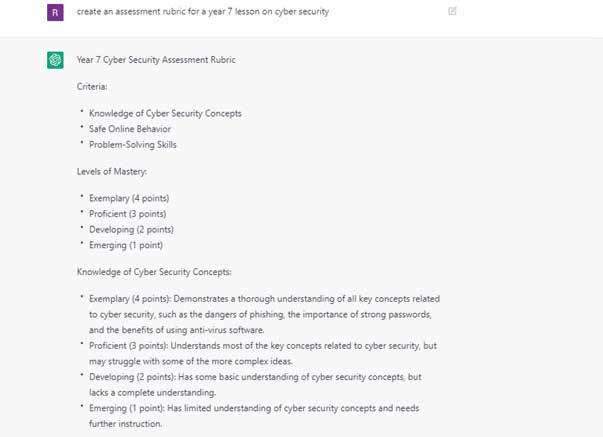



Another area where ChatGPT can help is in the development of rubrics. Rubrics are an important tool for marking pupils and providing meaningful feedback but creating them can be time-consuming. ChatGPT can automate this process and provide teachers with customised rubrics based on their specifications, allowing them to spend less time on this task and more time on other areas.

MARCH 2023 // HWRK MAGAZINE // 41 HWRKMAGAZINE.CO.UK PEDAGOGY
PEDAGOGY
MARKING PUPIL WORK

ChatGPT can also provide valuable support for assignment feedback. By using the model, teachers can generate detailed and personalised feedback on student work in a matter of minutes, improving the speed and quality of feedback. This, in turn, can help students receive the guidance they need to improve their work and achieve better results.

REPORT WRITING
Another important task for teachers is report writing, and ChatGPT can be used to help with this as well. By using the model to generate anonymous reports, teachers can save time and focus on more meaningful tasks, such as analysing student performance and developing strategies for improvement.

@hwrk_magazine 42 // HWRK MAGAZINE // MARCH 2023
SCAFFOLDING RESOURCES




ChatGPT can also be used to create gap fill exercises, which can be a valuable tool for improving student understanding and language skills. By using the model to generate exercises that are tailored to specific skill levels, teachers can provide students with the right level of challenge and support.

MARCH 2023 // HWRK MAGAZINE // 43 HWRKMAGAZINE.CO.UK PEDAGOGY
PEDAGOGY
FOR YOUR OWN PROFESSIONAL DEVELOPMENT


The benefits of ChatGPT extend beyond the classroom and can also support your own professional development. If you’re seeking a new role, you can utilise ChatGPT by entering the job description and your CV, and it will generate a personalised covering letter for you. Additionally, if you want to stay up-to-date with the latest research in your field but don’t have the time to read in-depth, you can request a summary from ChatGPT. With just a hundred words, you’ll be able to grasp the key points without the e ort of reading through the entire article.
TOP TIPS

First things first, sign up for an account and have some fun! Explore its features, ask it a few questions, and see what kind of answers you get. Trust us, the more you play with it, the more you’ll understand its capabilities and how it can enhance your lessons.

When it comes to using ChatGPT in the classroom, it’s important to give your pupils clear instructions. Make sure they know the purpose of the tool and how to use it e ectively. Give them some guidelines on what types of questions are appropriate to ask and what types of information should not be entered into the system. Be aware of those misconceptions – it isn’t always right!
When writing commands for ChatGPT, it is important to keep a few things in mind to ensure that it accurately understands and responds to your request:

















1. Be clear and concise: Make sure your commands are specific and to the point. The more concise your request, the more likely it is to provide a relevant answer.



2. Use proper grammar and punctuation: ChatGPT is trained to understand written language, so it is important to use proper grammar and punctuation when writing commands.







3. Provide context: If your request requires context, make sure to provide it. For example, if you want to know a specific country’s capital, include the country’s name in your request.






4. Avoid ambiguity: Avoid using words or phrases that have multiple meanings. This will help ChatGPT understand what you are looking for and provide the most accurate response.
5. Use natural language: Write your commands as if you were asking a question to another person. This will help ChatGPT understand the intent behind your request and provide a more natural response.
And one last thing – privacy is key! Never enter any personal information, including the information of your pupils, into ChatGPT. This includes names, addresses, phone numbers, and any other sensitive information. We want to keep everyone safe and protected.




ChatGPT is a valuable tool for teachers and has the potential to revolutionise the way we approach many of the tasks and responsibilities that come with the job. From generating lesson plans and providing feedback to answering questions and supporting professional development, ChatGPT o ers a wide range of benefits that can help teachers save time and improve the quality of their work. However, it’s important to remember that like any new technology, we must adapt to its use and find the best way to integrate it into our work. Just as math teachers didn’t stop teaching math when the calculator was invented, we can use ChatGPT as a tool where appropriate, and still complete tasks without it. In the end, it’s up to each teacher to determine how they want to use this new technology to support their workload and professional development.
You will always be the expert in your classroom and no matter how good the robots get nothing will compare to the way you know and care about your classes. So, let’s embrace technology if it will reduce our workloads and give us more time to do the thing we love - teaching!
@hwrk_magazine 44 // HWRK MAGAZINE // MARCH 2023
48. Diversifying Primary Music
How to create a more meaningful curriculum by ensuring diversity

52. How I Use Visualisers To Enhance Teaching In Art & Design
Modelling the creation of artwork under the visualiser is a game-changer
56. The Importance Of Concepts In Maths
How a conceptual approach to maths develops creativity and freedom for students

EXPAND YOUR MIND ONE SUBJECT AT A TIME MARCH 2023 // HWRK MAGAZINE // 47 @hwrk_magazine
DIVERSIFYING PRIMARY MUSIC
Music is a universal language and is one of the highest forms of creativity. It has the ability to ignite all areas of child development:literacy, intellectual, social-emotional, motor and understanding of language. It supports children to explore the meanings of words and sounds, within a social/historical context.
By Sarah Wordlaw
We are in a climate where creative arts are beginning to be squeezed out of timetables but we simply cannot let this happen. Music is a wonderful platform to learn about society and its people: struggles, celebrations and protests. I wonder, how diverse is your music curriculum? A diverse and actively inclusive music curriculum encompasses more than simply “African drumming” for one term in KS2.
POPULAR
Pop Rap

Punk
Hip hop
Heavy Metal House
Electronic Dance
Across a child’s journey through primary school, they should be exposed to a wide range of music genres from: popular, traditional, orchestral and jazz and improvised. These could be covered both in lessons, but also through singing assemblies and woven into other subjects in school such as Geography or History. Through a range of genres, you can teach the key elements of music: timbre, texture, rhythm, melody, beat,
ORCHESTRAL
Classical Opera
Mediaeval
Indian classical
Choral
Waltz
Baroque
Romantic 20th century
TRADITIONAL Religions

Folk
Flamenco
Samba

Spiritual Gospel
Rumba
Gamelan
West African drumming

harmony, structure, tempo, pitch and dynamics. Being able to recognise, hear and describe these different elements, allow us to understand music theory better, and coupled with an understanding of historical and social context, allow us to improve children’s musical development. Below are some examples of genres of music to include in your whole school map.
JAZZ/IMPROVISED
Jazz
Big band
Latin Dixieland
Swing
Motown
Gypsy jazz

Blues
Ragtime
CURRICULUM @hwrk_magazine 48 // HWRK MAGAZINE // MARCH 2023









HWRKMAGAZINE.CO.UK MARCH 2023 // HWRK MAGAZINE // 49 CURRICULM
Singing Assemblies
Assemblies are a wonderful time to teach music, the history of genre and about musical legends and their background. You do not have to be a music teacher, or even a great singer, to lead a brilliant singing assembly. A great way to ensure coverage of a variety of genres is to link the taught songs to a whole school learning theme or to something that’s happening in the world at the time. For example, I’ve taught “Born This Way” by Lady Gaga during LGBT History Month and taught “I wish I knew” by Nina Simone on Martin Luther King Day.
There are many different structures to singing assembly, here are some tips on delivering a powerful singing/music assembly:
• Start by playing a song, giving no context, only the opportunity to listen. Children may close their eyes when listening.
• After listening to the song (or an extract from the song) ask them:

- How did this piece make you feel?
- What do you think this song is about? How do you know?
- What might the artist have been thinking about when writing this song?
- What can we tell about the artist from this song?
- What genre of music do you think this is?

- When do you think this song was written? What makes you think that?
• You could also show children an extract of the lyrics and ask them the same reflective questions.

• Once you’ve introduced the song, and children have shared some reflections, you can start to give wider context to the song: genre, the historical and/or societal context it was released in, is it music of struggle or music of celebration?
• The only way to learn and perform music in the way in which it was intended, is to fully understand the meaning and context. Once you have shared these, then you can teach the children to sing it.
A huge amount about a culture’s struggle and evolution can be told through the medium of music. Music is a cultural practice passed on through generations, from ancient civilisations until the present.
For example, it is possible to trace modern day hip hop to West Africa in 1800. Many West Africans who were traded into slavery and shipped across the Atlantic told stories of their memories and hopes through music, and some used instruments such as banko and tambourine. Some sang about hope through religion, for example Christianity, and throughout time those Christian songs evolved into what we now call Gospel (which means “good news”). In many modern day rap songs there are remnants of repeating verses much like was prevalent in songs sung by the enslaved. This music with a sadder, more downbeat tone we call Blues and the more upbeat sounds grew to become Jazz. Gospel music over time evolved to soul, and soul to R&B and hip-hop.
The evolution of hip hop itself is a cultural learning journey, throughout segregation, the fight for equal rights in 1970s New York City, protests, poverty and systematic racism from the government and police.
Music as a source of Education in communities



Throughout history, and in many places still today, music is used as a key vessel to educate communities about its people about key issues. Some examples of songs which have been written to educate communities are: Kano Boys from Nigeria wrote songs to educate about health issues such as HIV, Dobet Gnahoré from Ivory Coast sang songs to educate about gender equality and Lucky Dube from South Africa performed songs to educate about peace between races with ‘ Together as One‘ being the first ever song by a black artist played on a white radio station in South Africa.
Here is a list of great songs to teach in assembly, as a platform to learn about key human rights issues:
Environment
Big Yellow Taxi - Counting Crows and Vanessa Carlton
Truth to Power - One Republic
Mercy Mercy Me (The Ecology)” by Marvin Gaye
Race
A Change Gonna Come - Sam Cooke
What’s Going On - Marvin Gaye
Changes - Tupac
CURRICULUM @hwrk_magazine 50 // HWRK MAGAZINE // MARCH 2023
Female Empowerment and Self Love

Brown Skin Girl - Blue Ivy, SAINt JHN, Beyonce and Wizkid


Respect - Aretha Franklin
Beautiful - Christina Aguilera

War and Peace
What’s going on - Marvin Gaye
Imagine - John Lennon
Music is a tool that connects people across time and space. It transcends walls and boundaries with its language and is a wonderful way for us to






express emotions and complex ideas. Use it wisely! Make sure that the music you teach and expose children to has key messages and give children the space to explore, reflect, learn and perform, in order to find out about the world them. Find out more about how to diversify the primary curriculumMusic and other subjects - in my book Time To Shake Up The Curriculum.

CURRICULM HWRKMAGAZINE.CO.UK MARCH 2023 // HWRK MAGAZINE // 51
HOW I USE A VISUALISER TO DELIVER PRACTICAL INSTRUCTION IN ART & DESIGN
The practical demonstration is a core feature of the Art and Design teacher’s practice. During this event, pupils encounter the materials, techniques and processes they will be using that lesson and they see how to work with these to achieve an outcome. The practical demo can impress, it can be spectacular, but these are not its chief aim: in the first instance, it is meant to be instructive, which is to say that during the demo, pupils are meant to be learning how to do what they see.
By Jon Aye
The basic, age-old format for the practical demo involves a version of the following: the teacher gathers the class around them at a table, or some other space in the room, where they carry out a version of the process pupils will be engaging in for that lesson. Pupils watch and go back to their desks to practise what they have seen.
The premise of the practical demo is that it is better than simply providing pupils with a verbal or written explanation, and in fact the research bears this out. But how do we distinguish between a demo that is truly instructive, or sufficiently instructive, and one that is insufficiently so? Ultimately, the primary indicator of the success
of a demo can be seen in what happens afterwards and the degree to which pupils experience success in producing their outcomes. Success indicators might also be present in how closely pupils’ activity matches what took place during the demonstration and whether pupils are applying the techniques and processes they were shown.
In my experience as an Art and Design teacher, there are a number of strategies a teacher can employ during this kind of demo to ensure pupils are engaged and take this knowledge away with them back to their desks. A teacher can narrate what they are doing, highlighting key steps, or simply demonstrate silently to promote

close attention. They can interleave prior knowledge, asking pupils questions about the materials and processes being used - if they have encountered them before - so as to directly engage pupils and activate prior knowledge.


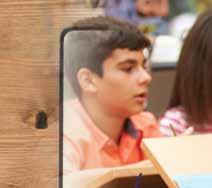

The teacher might deliberately do something wrong, so as to prefigure common errors, or to demonstrate how to problem solve, or this problem solving could be carried out as a discursive process with pupils. At the end of a demo, a teacher might question pupils about what they have just seen, perhaps choosing pupils to recount steps.
My experiments with these and numerous other strategies have

CURRICULUM @hwrk_magazine 52 // HWRK MAGAZINE // MARCH 2023
allowed me to deliver demos that have seemed to engaged my pupils, where the attention has stayed on me and questions about the process have been answered correctly at the end.
Despite this, results have tended to vary when it’s time for pupils to apply what they have seen to their own work. It’s not been uncommon for pupils to seem to have gaps in their knowledge of the process they were just shown once they start their own work, leading them to engage in a freestyle or improvised version that’s loosely directed at arriving at the same outcome I produced. Accepting this as a facet of the traditional practical demo has normalised the need for follow-up re-teaching of








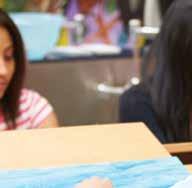

the same processes to many pupils individually throughout the lesson.



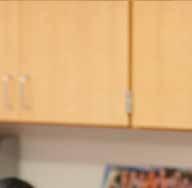
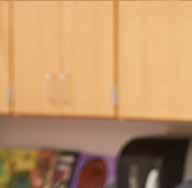
This is clearly time that could be more effectively spent, and it’s worth looking more closely at how effective this format is as a teaching strategy, particularly the accessibility of the demonstration when pupils are gathered around the teacher as an audience.

The durational aspect of this demo format must first be scrutinised. A live demo, with pupils gathered around a teacher, can take upwards of five minutes. If we consider Sweller’s concept of cognitive load, then that’s a fair amount of information for pupils to memorise in one go, so as to then apply by themselves. Imagine we delivered a
five to ten minute speech to pupils and then asked them to return to their desks and practice reciting it, perhaps with the aim of putting their own spin on the cadence and intonations they use. It’s fair to say pupils would likely have trouble remembering the content of the speech in the first place, so any experiments with cadence and intonation would be lost.
Moreover, we must think about the spatial dynamics of this set up from a pupil perspective. In my practice, I’ve taught classes of anything from two to thirty-two children. There’s a significant suspension of disbelief - or perhaps a resigned acceptance - involved in gathering a group of upwards of twenty five teenagers around a table to watch
HWRKMAGAZINE.CO.UK MARCH 2023 // HWRK MAGAZINE // 53 CURRICULM
you produce an art work and assuming they will maintain the level of concentration needed to memorise each significant action you undertake, and that’s if they’re able to see properly as they squeeze in next to their peers and avoid the temptation to interact with each other.



This might be fine, perhaps you don’t want pupils to learn specific steps of a process; perhaps a demo is designed to be more of a performance or spectacle, to provide a general understanding of a practice that pupils will explore and discover more about on their own. That’s perfectly conceivable, depending on your learning objective. But if the process you are demonstrating does contain key aspects that you need pupils to see clearly and remember, so they can replicate these successfully on their own, then this format needs to be reconsidered.
The use of a visualiser presents several solutions to the problems discussed. Research carried out by Richard Mayer and a number of other researchers has made clear the benefits of using video technology when it comes to the teaching of practical skills. Mayer has looked mostly at the use of pre-recorded videos within STEM subjects, but the same basic principles apply to live videos and to practical subjects more broadly. Pre-recorded videos are certainly an option here, but in my own practice I’ve mostly explored the use of live video through the use of a visualiser.
I recently experimented with using the visualiser to teach my year 8s how to draw a hummingbird from observation of a photo. This was delivered at the beginning of the year as a form of baseline assessment, and involved the learning of some new skills together with the practising of

skills and concepts learned in year 7, namely line drawing, tonal shading and the use of mark-making to create a sense of texture.
Here is the image pupils studied [TO BE INCLUDED]. For this first task of the year, it was important for the learning experience to be closely guided, for pupils activity to closely match mine, so as to ensure everyone is able to build up and practice the skills and concepts required for the later, more advanced, more open and independent work. We therefore all started off drawing the same image. In the past, in my efforts to ensure pupils found the work interesting and engaging, I would have been inclined to provide pupils with a choice of images. I’ve however found that any special engagement generated by this novelty, particularly at this early stage in the learning process, can be quickly undermined by the difficulties pupils experience with engaging with the broader and more complex set of challenges created by having more than one image - before pupils learn how to draw hummingbirds, they first need to learn how to draw a hummingbird. In any case, to generate engagement through novelties like this is a misstep, as can be understood through Mayer’s concept of ‘seductive details’: extraneous elements which essentially decorate a task without actually aiding learning in any way.
The task was broken down into the three lessons and I’ll just outline the format for the first one here, as an example of how the visualiser was applied to teaching this task. The aim was to embed this new skill so as to allow pupils to apply this to other drawings of animals, including other images of hummingbirds, for the later stages of the Scheme of Work.
For the drawing section of the lesson, pupils were seated at their desks and ready to draw, with hummingbird images in front of them, while I worked at the front of the classroom under the visualiser, my live drawing projected on the whiteboard. I worked in steps, stopping to question pupils about what I was doing each time and then allowing pupils to practice the same step. This back and forth, from drawing to then looking at and speaking to pupils, has been shown to be the most effective and engaging format for delivering a video demonstration. It is also important that pupils were able to see my hand doing the drawing and the orientation of the video was first person.
My first step was to draw a diagonal line on my page and ask pupils to think about why I’ d done this. By bouncing some questioning around the classroom, we establish that the line serves as a first guide for laying out and judging the scale of the drawing we are about to produce, thus establishing the usefulness of construction lines and shapes.
I then used this to draw a loose oval shape for the head and a stretched one for the body. I modelled my thinking out loud as I did this; explaining that I wanted a basic shape for these body parts that I could refine later, and ovals seemed about right. Pupils then carried out these steps, and as they did this I was able to walk around and check their work, giving feedback individually about proportions and shape. We next discussed what shape would be suitable for the wings and the tail, with pupils correctly identifying a triangle as the most suitable starting point, thus demonstrating their grasp of the lesson’s learning objective. Once these basic shapes were drawn, I demonstrated how to refine the oval shape into a more accurate line drawing
CURRICULUM @hwrk_magazine 54 // HWRK MAGAZINE // MARCH 2023
of the hummingbird’s head. As pupils completed this step, I was once again able to circulate the classroom, checking work and giving feedback.


From this point, pupils were tasked with working independently to develop the outline of the rest of the hummingbird. During this independent working time there were points where I encouraged pupils to discuss each other’s work and offer feedback. We finished the lesson with a simple plenary: some sentences on the board that pupils were to write and complete, guiding them to reflect on what they had done and why they had done it. Summarising and explaining lesson content in this way is another form of ‘generative activity’, allowing pupils to further consolidate their learning. It also provided them with notes for independent revisiting of this work later.
This format has led to a noticeably higher success rate for this piece of learning and for my teaching in general. Rather than delivering practical knowledge in large chunks, I am now able to break

processes down into smaller, more precise steps, with the opportunity for pupils to practice in between – a combination of strategies that have been shown to increase learning.

Despite the guided nature of it, pupils outcomes still showed some variation, particularly in the latter two lessons, which involved the application of tonal shading and mark making in a layered manner to record tonal and textural details, but the variation was significantly less then when the demo had been delivered with pupils gathered around me and all steps were demonstrated in one go. I was also able to control the pace of development of this drawing to a greater degree, ensuring the class progressed steadily as a group and avoiding pupils completing too much of without getting a chance to understand and apply the necessary principles. The example of note taking from the plenary continued with each of the steps developed over the subsequent two lessons, giving pupils a selfgenerated guide-book for this process that they could refer to for later tasks.
Perhaps most importantly, it has led to a higher success rate with later stages of this scheme of work, where pupils are tasked with applying this process when working from a range of images, followed by images they have researched themselves. The first hummingbird drawing, with its annotations, has seemed to enable greater independence and self-regulation. To be clear, this is not the way to draw a hummingbird, but one way to do so. Pupils are given freedom to depart from this in the latter stages of the project, but it’s a piece of learning that serves as an important scaffold for everyone to access if needed, and a foundation for further exploration.
The noticeably higher success rate occurring in my lessons more generally, as a result of using the visualiser, has meant it is now an embedded feature of my practice. It is now not a question of when should a visualiser be used for a demo, but what good reason is there for not using one.
CURRICULM HWRKMAGAZINE.CO.UK MARCH 2023 // HWRK MAGAZINE // 55
THE IMPORTANCE OF CONCEPTS IN MATHS




For many pupils, mathematics is a subject of memorisation and calculation. In his 2011 study,1 ‘Pupils’ attitudes towards mathematics: a comparative study of Norwegian and English secondary students’ Birgit Pepin noted “English pupils perceived the nature of mathematics more rigidly as ‘getting the right answer’, and where little creativity is encouraged” and “it is boring and it does not allow you to be creative. … mathematics is also very complicated as you have to use many di erent formulas…”.
 By Peter Mattock
By Peter Mattock
Learning mathematics doesn’t have to be like this. I don’t mean we need to substitute learning for “fun” activities or make pupils face problems for which they are ill-prepared. Instead, I mean that we can ensure pupils learn about mathematical ideas rather than just do calculations and learn formulae. Within each mathematical concept there is an inherent structure that we can model and represent and so can teach pupils to recognise those structures so that they can gain insight into the procedures and formulae that arise from them.
Take, for example, simple column addition. This is a process that nearly all pupils learn to carry out successfully. What many pupils never learn about is that column
addition works because of the properties of three maths concepts:
1) Addition; modelled as either aggregation (collecting objects) or augmentation (connecting measures).
2) Place Value; the idea that a fixed number of digits (usually the 10 digits 0 to 9) can be combined to create numerals that can represent (nearly) any number by assigning different values to the positions that the digits occupy.
3) Exchange; the idea that any expression or value can be swapped with another equal expression/ value.

Ensuring that pupils understand the concepts at play in a process
like this has many advantages. Firstly, appreciating how the column addition algorithm arises from these concepts will allow pupils to use it more flexibly. For example, pupils can recognise that in a calculation such as 3020 + 406 that (because no exchange is required) I can add the columns in any order I like rather than the fixed process of starting with the ones column and working up the different place value columns.
Perhaps more importantly, pupils are in a much stronger position to accept that a calculation like 2999 + 397 (a calculation that occasionally causes issues due to the number of different exchanges required) is equivalent to the calculation 3000 + 396 (a much more straightforward addition to calculate).
CURRICULUM @hwrk_magazine 56 // HWRK MAGAZINE // MARCH 2023
In addition to helping to develop this more flexible use of processes and procedures, another big advantage to approaching the teaching of mathematics in this way is that it allows us to support pupils in making connections between different procedures that arise from the same concepts. For example, the addition of fractions uses exactly the same concepts and models of addition and exchange (along with the concept and suitable models for fractions).
The addition of surds uses the same concepts again, as does the addition of terms expressed algebraically (in fact it is because these concepts are what allows the addition of algebraic terms to work in the way it does that they also arise with all of these different types of numbers). When pupils
learn about concepts like addition and exchange, revisiting them and combining them with an everdeveloping concept of number, they can see more clearly the links between these seemingly different processes. In the last few years cognitive science has contributed much to our knowledge of how to make learning “sticky” with pupils, and an important idea from cognitive science is the idea of a schema. A schema is the way we organise our knowledge of different concepts; how it is connected in our heads. In order to gain new knowledge, we must assimilate it into our existing schema.
Where things like column addition, addition of fractions, addition of surds, addition of vectors and addition of algebraic terms are taught as separate and distinct



processes to be memorised, these connections are not made and so have to be remembered as isolated bits of knowledge (which of course many pupils never do).
Where pupils are first taught about addition, place value, fractions, surds, vectors and terms and shown how these concepts combine in very similar ways to allow us to make sense of what it means to add all of these different entities, the connections are much stronger and the knowledge much more easily recalled.
Another advantage to approaching maths teaching by teaching about mathematical concepts is that the journey through mathematics becomes infinitely more coherent. Instead of pupils feeling like they have to learn a million and one







HWRKMAGAZINE.CO.UK MARCH 2023 // HWRK MAGAZINE // 57 CURRICULM
separate little facts, conventions and processes, they instead can come to recognise that these immutable concepts simply reappear in different guises.













A good example of this is the concept of proportion. Proportion and multiplicative reasoning pervades much of school level mathematics. It is the underlying concept and structure behind percentage, pie charts, similarity, unit conversion, compound units (such as speed and density) and gradient (to name but a few). It is very typical to see each of these things taught in many different ways. Percentage taught with the use of decimal multipliers.
Pie charts taught using a unitary method (i.e. work out the frequency associated with a single degree of turn). Similarity taught using scale factors. Unit conversion taught with a conversion factor. Compound units taught with formula triangles. Gradient as “rise over run”. Is it any wonder that many pupils simply cannot remember and recall all of these things?
Instead, pupils could see all of these as aspects of the same concept – the multiplicative relationship that exists between two quantities. Using a suitable and consistent set of representations and intelligently designed practice, pupils can really see that these are the same underlying idea and so gain a much more coherent view of the mathematical landscape that we are teaching them about.
And, ultimately, this is what I hope that my new book, Conceptual Maths will empower teachers to do. Laid out within its pages are every maths concept taught at school level (at least in England). It showcases how we can model and represent these concepts in a way that provide the coherent experience that pupils need. It highlights which aspects of a concept are pre-requisite to other concepts and how concepts are linked together. It illustrates how the processes associated with the concepts arise from them so that teachers can ensure
pupils know not just how to carry out a procedure but also why the procedure works in the way it does. Finally, it gives examples of questions and tasks that can be used to get pupils thinking hard about these concepts and reinforce the key structures within each concept.







In his seminal work, ‘Mathematics counts’ (often known as the Cockcroft report) Dr WH Cockroft writes, “Conceptual structures are richly interconnected bodies of knowledge, including the routines required for the exercise of skills. It is these which make up the substance of mathematical knowledge stored in the long term memory. They underpin the performance of skills and their presence is shown by the ability to remedy a memory failure or to adapt a procedure to a new situation.” 2 This, for me, is what mathematics is, and what we should be teaching pupils about; I just hope that Conceptual Maths both helps teachers to see both why this is important and how to do it well.


References:



1. https://www.google.com/url?sa=t&source=web&rct=j&url=https://scholar.google.co.uk/scholar_url?url=https://www.academia.edu/download/49198074/s11858011-0314-920160928-12079-1ktrtut.pdf&hl=en&sa=X&ei=mFrrY72UIYbTmAHh8IOgDA&scisig=AAGBfm27F9FizqGPaNtHf2qGDH3Jx0EV9A&oi=scholarr&ved=2ahUKEwjniv2435T9AhWZg1wKHdxtDhYQgAN6BAgJEAE&usg=AOvVaw0b5nwmNOeQNGRQ5_CoZlMq
2 http://www.educationengland.org.uk/documents/cockcroft/cockcroft1982.html
CURRICULUM @hwrk_magazine 58 // HWRK MAGAZINE // MARCH 2023
LEADERSHIP
62. BEHAVIOUR LEADERSHIP





Vital strategies for leaders of behaviour in schools

HWRKMAGAZINE.CO.UK MARCH 2023 // HWRK MAGAZINE // 61
Behaviour Leadership
1) The clarity of your policy
One of the most common areas where schools’ behaviour policies allow standards to slip is when the policy becomes unclear or filled with gaping holes. An effective behaviour policy will be clear and simple. Grey areas should be actively identified and steps taken to address these further.
2) The consistent application of your policy
If students are to have a consistent experience in a school, and if teachers’ expertise is to be used to its full advantage, a behaviour policy must be in use in every classroom and every corridor of a school. Students should have the same policy in place throughout – if teachers and departments are left to fend for themselves, there becomes a huge chance
By Amy Forrester
that the policy lacks any real clarity on the ground – where the students experience it.
If schools are to effectively understand what is happening on the ground and get a measure of the standard of behaviour in their school, a behaviour system should also be a source of data that reflects what is happening. Of course, this is only worth anything when it is used consistently. Therefore, the drive for consistency should always be at the forefront of everyone’s’ minds. After all, behaviour is everyone’s business in a school.
Workload and wellbeing: are we prioritising the right things?

There also needs to be some serious consideration of the impact that behaviour has on staff workload. If schools are to rise to challenge, and turn the tide of
the increase in behaviour issues, then this must be done in a workload friendly way for staff. Without appropriate consideration of this, if systems overburden staff, there will be little hope left for achieving the behaviour nirvana of consistency. There are some ways that schools can easily manage this:
1) Centralised systems:
In centralising behaviour systems, schools can find time effective ways in which to support busy teachers with their workload. For example, schools could ask that class teachers set and supervise their own detentions, then that Heads of Department do, then that Heads of Year do, and so on and so on. The issue with this is just how much time is taken up when compared with the value of that time. If schools centralise their detentions, and run one each lunch time and one each day after school, we free up class teachers to be using their time more effectively on what really matters; planning teaching
@hwrk_magazine 62 // HWRK MAGAZINE // MARCH 2023
Anecdotally speaking, it seems that many teachers and school leaders are noticing an increase in behaviour issues in schools. While the causes of this remain unclear, it is absolutely vital that school leaders pay close attention to this, while critically reflecting on their systems within their own school. If schools are to ensure that they are operationally robust when it comes to behaviour, there are some key areas that are imperative to consider:
and learning, or developing their subject knowledge. There is a worry, when talking about ideas like this, that this would mean that teachers lack the opportunity to take responsibility for the student in detention, and in using the detention in a restorative way. This is a false flag situation – those things can still, and should, take place under a centralised system. Teachers should still have restorative conversations with students – just because they are in a detention in a different room, it does not mean that that conversation is any less effective.
Furthermore, in centralising systems, we remove the disincentive for teachers not to follow a behaviour policy. If we are agreed that consistency matters hugely in the success of a school’s behaviour policy, we need to realistic in schools and create systems that staff will use. If they become disadvantaged by using it, because they have to spend their own time after school supervising someone else’s child, rather than spending time with their own child, this becomes a pretty powerful reason for
them not to use the system in the first place.
Equally, if using the system means a never ending cycle of having to call home, inform parents, chase up nonattendance…it is not hard to see why this would further act as another deterrent for already busy teachers. And again, we must ask ourselves whether this is, in fact, a good use of a subject expert’s time, or whether that time would be better used thinking deeply about their lessons the next day, or planning a carefully crafted explanation of a tricky topic that they know their exam class are struggling with.
2) Software systems with minimised clicks
If there was one thing that blighted schools for a good number of years it is slow, overly complicated software packages that make teachers want to rip out their eye balls. There are better alternatives

now and school leaders need to take responsibility for creating a system, for use in school, that asks the bare minimum of staff time, whilst keeping it to as few clicks as possible on the system. Any more than 3, I would argue, is too many! The other bonus of systems such as this is that they can easily become the main point of communication around detentions, saving teachers hundreds of hours on the phone with a single click of a button!
All in all, school leaders have a huge role to play in setting the tone for how they want behaviour to be managed in school. They also have to consider that teachers’ time is not infinite and we have to create conditions for teachers to work effectively and have a healthy work-life balance. If your behaviour systems put this at risk, the question should not be why staff are not using it – more, it should be asked to leadership teams why they have felt the need to create systems that waste a tax payer funded, finite, and precious resource such as teachers’ time and resources.

MARCH 2023 // HWRK MAGAZINE // 63 HWRKMAGAZINE.CO.UK LEADERSHIP






@hwrk_magazine 64 // HWRK MAGAZINE // MARCH 2023






MARCH 2023 // HWRK MAGAZINE // 65 HWRKMAGAZINE.CO.UK





























 Andy McHugh Editor | HWRK Magazine
Andy McHugh Editor | HWRK Magazine




















 By Rachel Arthur and Joe Arday
By Rachel Arthur and Joe Arday





















 Chief Strategy O cer @dawnhallybone
Chief Strategy O cer @dawnhallybone


















 Sukvinder Kathuria
Founder and CEO TechGirls @techgirlsuk
Sukvinder Kathuria
Founder and CEO TechGirls @techgirlsuk









































































 By Kara Kiernan
By Kara Kiernan






























 By Bhamika Bhudia
By Bhamika Bhudia




































 By Rachel Arthur
By Rachel Arthur


























































































































 By Peter Mattock
By Peter Mattock






















































